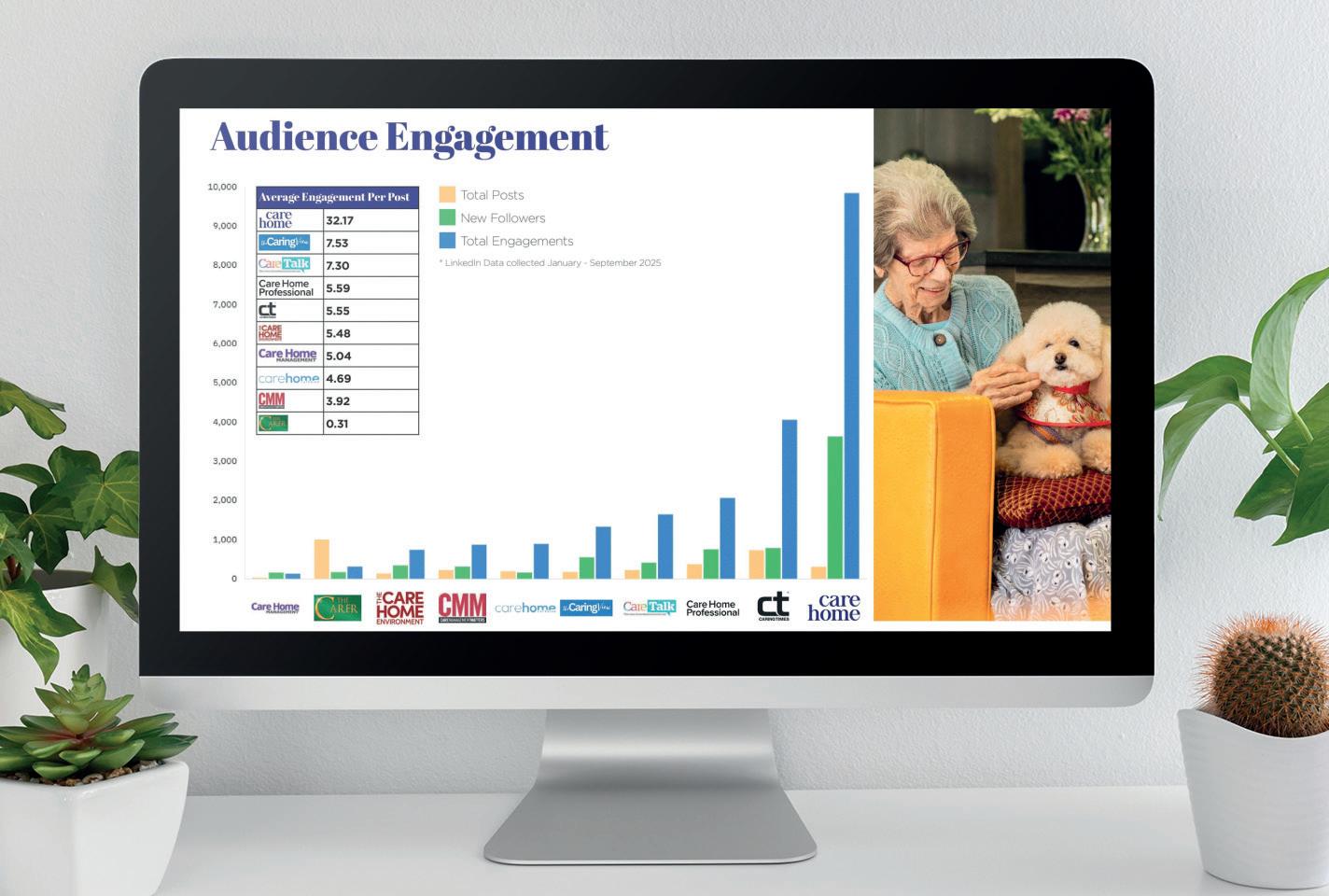

care Lead with at Aria Care
A Career with Heart and Purpose
Are you passionate about making a positive impact in people’s lives? Do you have a heart for delivering exceptional care? If so, a leadership career with Aria Care could be your next step toward personal and professional fulfilment.
At Aria Care, we’re dedicated to providing high-quality care services in a supportive and
both personally and professionally while making a meaningful impact in the lives of others.
Why Choose Aria Care?
When you join Aria Care, you’ll be part of a close-knit team focussed on making every day better for the people we care for. We provide opportunities to learn, grow, and take on new



“Throughout my journey with Aria Care, I have witnessed firsthand how leadership progression is not just encouraged but truly nurtured within the business. Starting as Head of Sales, I have been fortunate to develop my skills and broaden my impact, progressing to Director of Sales and Marketing on the Executive team. This growth has been supported by a clear vision, trust from the leadership team, and a culture that fosters ambition and excellence. Aria Care has demonstrated a genuine commitment to recognising talent and providing the platform for leaders to thrive and contribute at the highest level. It’s an inspiring journey, and I am proud to be part of a company that puts people at the heart of everything it does.
Sarah Chapman Director of Sales and Marketing
We also offer a range of development opportunities to help our colleagues achieve their potential. Our Inspiring Leaders Development Programme is one example of how we support individuals to develop the confidence and skills they need to succeed in leadership roles.
"Without a doubt, the Inspiring Leaders programme has changed me as a leader. It made me challenge my own qualities and ways of working. As a result, my confidence has grown, and I have developed better ways of working. It has taught me to be proud of my knowledge."
Rhiannon Crofts, Home Manager at Brook House Care Home
Be Part of Something Meaningful
At Aria Care, we know that caring is more than just a job—it’s a calling. If you’re ready to make a real difference in the lives of others while building a career you can be proud of, join us today.
Apply now to begin your journey with Aria Care. Together, we can make every moment matter.

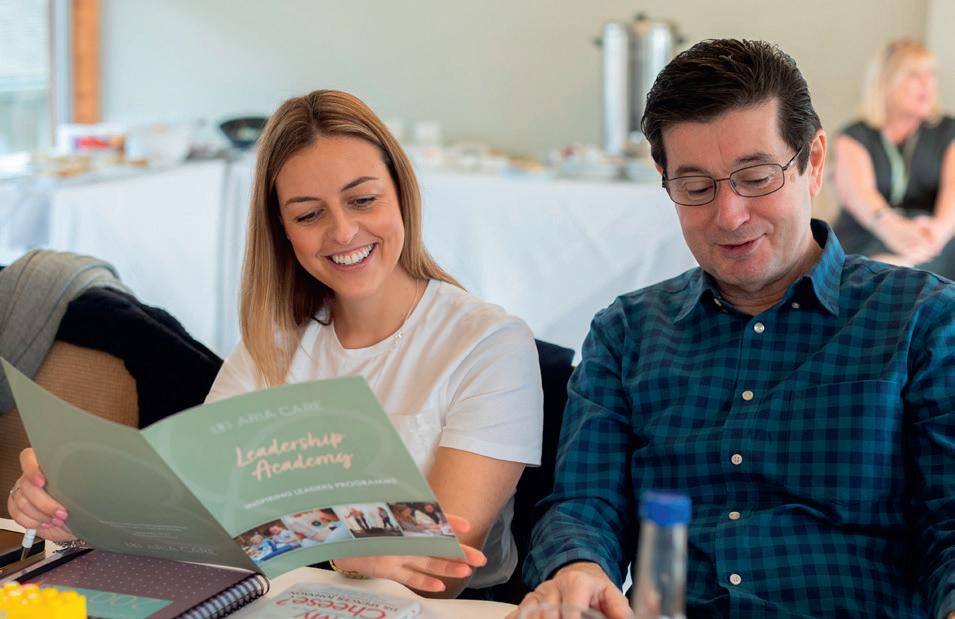

Chief Editor
Jade Evans
jade.evans@cimltd.co.uk
Publication Manager
James Davies james@carehomemagazine.co.uk
Tel: 01795 509 112
Account Manager
Katy Terrell kt@cimltd.co.uk
Tel: 01795 509 112
Credit Facilities Manager
Gwen Lee creditcontrol@cimltd.co.uk
Tel: 01795 509 103
Design and Production
James Taylor james@cimltd.co.uk
Grant Waters grant@cimltd.co.uk
Marketing Manager
Lucas Payne lucas@cimltd.co.uk
Head of Digital
Xhulio Bishtaja press@carehomemagazine.co.uk
Social Media Manager
Lily Lawson press@carehomemagazine.co.uk
Director
Tom Woollin tom@cimltd.co.uk
Managing Director
John Denning
Editor’s Letter
October 2025
As the seasons change, so too does the landscape of our sector – and in this issue, we shine a light on two topics that sit right at the heart of modern care home management: security and marketing.
Security systems in care homes have never been more important, yet it remains a delicate balancing act. Our feature on Keeping Dignity at the Heart of Security explores how providers can protect vulnerable residents without compromising their independence, privacy, or quality of life. We uncover the latest systems and approaches that are helping care homes stay safe while still feeling like home.

Our second main focus looks at marketing – an area increasingly crucial in a competitive industry. In Standing Out in a Crowded Market, we investigate what truly makes a care home visible and appealing to families and residents alike. Alongside this, our Essential 5 delves into the power of authentic storytelling, offering five practical ways to showcase your ethos and values in a way that resonates with your community.
Of course, this issue is also packed with expert insights, promotional editorials and the regular features our readers look forward to every month: Care Home of the Month, Industry Update, and Activity of the Month.
Whether you’re here for practical advice, inspiration, or simply to keep your finger on the pulse of the sector, we hope this issue provides the ideas and encouragement you need.
Jade Evans, Chief Editor

Table of Contents
6 Industry News
Delving into what’s currently happening within the care sector, we share insights into some of the latest news.
8 Care Home of the Month
Taking centre stage this October is Restful Homes, Cannock Specialist Care, as we share an insightful instalment of Care Home of the Month.
16 Essential 5 –Marketing
As part of our Marketing feature, we share five ways how authentic storytelling can showcase the ethos of a care home.
34 Activity of the Month
This month, we share details on life story work in care homes and how you can introduce journaling and scrapbooking to residents and the benefits it can bring.
44 Security Systems
Keeping dignity at the heart of security - we explore how to safeguard vulnerable residents without compromising independence and privacy.
46
Technology
In a promotional editorial from Pinpoint, we explore how enhanced safety measures can help care homes safeguard both residents and carers.

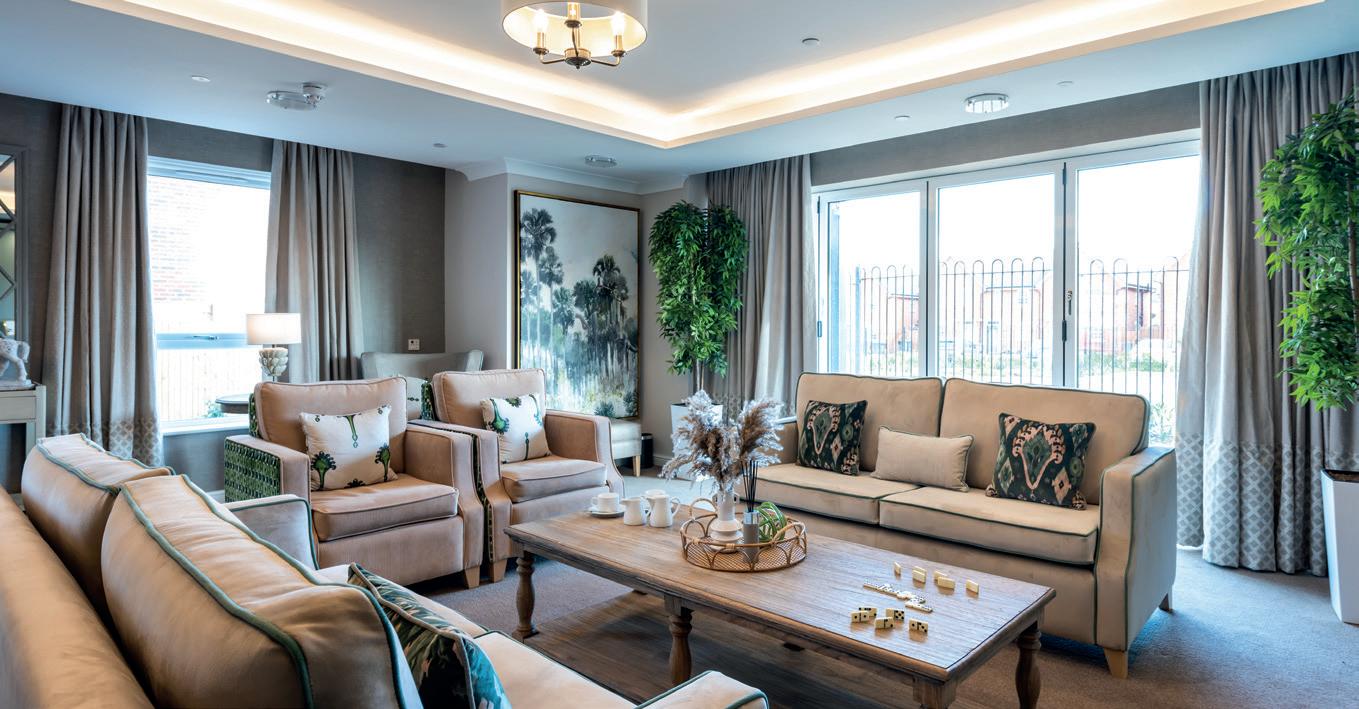


Industry update
Barchester Healthcare is Shortlisted for Two Customer Experience Awards
Barchester Healthcare is celebrating its talented Customer Experience team who have been short-listed in not one but two categories in the prestigious UK Customer Experience Awards. The premium care home provider which operates 267 care homes and private hospitals spanning the whole of the UK, entered two projects, both of which have been named finalists in their respective categories.
Established in 2010, the UK Customer Experience Awards are the most recognised customer experience focused awards in the UK, with entries across multiple sectors from globally renowned brands such as

McDonalds, Sainsburys and HSBC. Barchester Healthcare is the only company from the health sector to be shortlisted in either of its categories. The winners will be revealed at an awards ceremony at Wembley in October.
Sarah Lander-Scott, Director
of Customer Experience for Barchester Healthcare, said: “I could not be prouder of my team, to be recognised for our work at this level for a care home provider is extraordinary. We are competing alongside the most well-known brands in the world.”
Care Home Residents Give Wonka-Inspired Carnival Winnings to Charity
ADorset care home has donated its prize money to charity after winning the best parade entry at a popular local carnival.
Residents, families and team members from Colten Care’s Avon Reach in Mudeford dressed up on a Charlie and the Chocolate Factory theme to take part in the Christchurch Carnival.
They decorated their minibus with sweets, golden tickets and chocolate bars, and took to the route in costumes reflecting Roald Dahl’s famous story characters such as Veruca Salt, Oompa-Loompas and factory owner Willy Wonka himself.
Colby, one of the children involved, drove his own electric pick-up-truck, kitted out Wonkastyle.
Avon Reach Companionship
Team Leader Denise Marks said: “The atmosphere was full of music, laughter and celebration. As we

made our way through the parade we handed out sweets, lollipops and Wonka chocolate to the crowds. Colby’s vehicle was a huge hit alongside our costumes and the transformation of our minibus.”
Adding to the excitement, Home Manager Ruth Wildman, dressed as an Oompa-Loompa and resident Pat Torpey, acting as Willy Wonka, chose one lucky member of the crowd to receive a golden ticket, which won them a chocolate hamper.
At the closing ceremony by Christchurch Quay, the Avon Reach party learned they had won the best-in-parade award, securing a £100 top prize and winner’s shield.
Pat said: “We had a wonderful time and were even more delighted to be named winners of the parade at the end.”
In the spirit of giving back, Avon Reach residents decided to donate the cash prize to the home’s chosen charity of the year, the Christchurch Community Partnership.

Care Home of the Month Restful Homes, Cannock Specialist Care
Cannock Specialist Care Centre is a purposebuilt care home located on Cannock Road in Staffordshire, designed to redefine the standard of residential and specialist care in the region. Opened in July 2022, this stateof-the-art facility offers a warm, luxurious, and dementia-friendly environment tailored to meet the diverse needs of older adults, including those requiring, nursing, dementia, and mental health care.
Jo Swain, Home Manager, Cannock Specialist Care Centre, said, “Our home consists of 89 spacious bedroom suites, each featuring its own seating area, ensuite wet room, and even a private kitchenette, the centre prioritises comfort, independence, and dignity. The home is thoughtfully divided into smaller households, each with its own lounge and dining area, ensuring personalised care and a true sense of community.” Residents can also enjoy access to rooftop gardens, sensory rooms, private dining spaces, and even a cinema on every floor; making it not just a care home, but a vibrant living experience.
Looking into recent introductions that have had particularly positive impact on residents’ wellbeing and quality of life, Jo explained, “We’re proud to launch a new initiative aimed at enriching the lives of our residents and supporting our dedicated staff. This programme focuses on enhancing wellbeing through creative activities, personalised care plans, and stronger community connections. It’s all about making our home even more vibrant, inclusive, and supportive for everyone who lives and works here.”
Cannock’s approach blends
Sponsored By
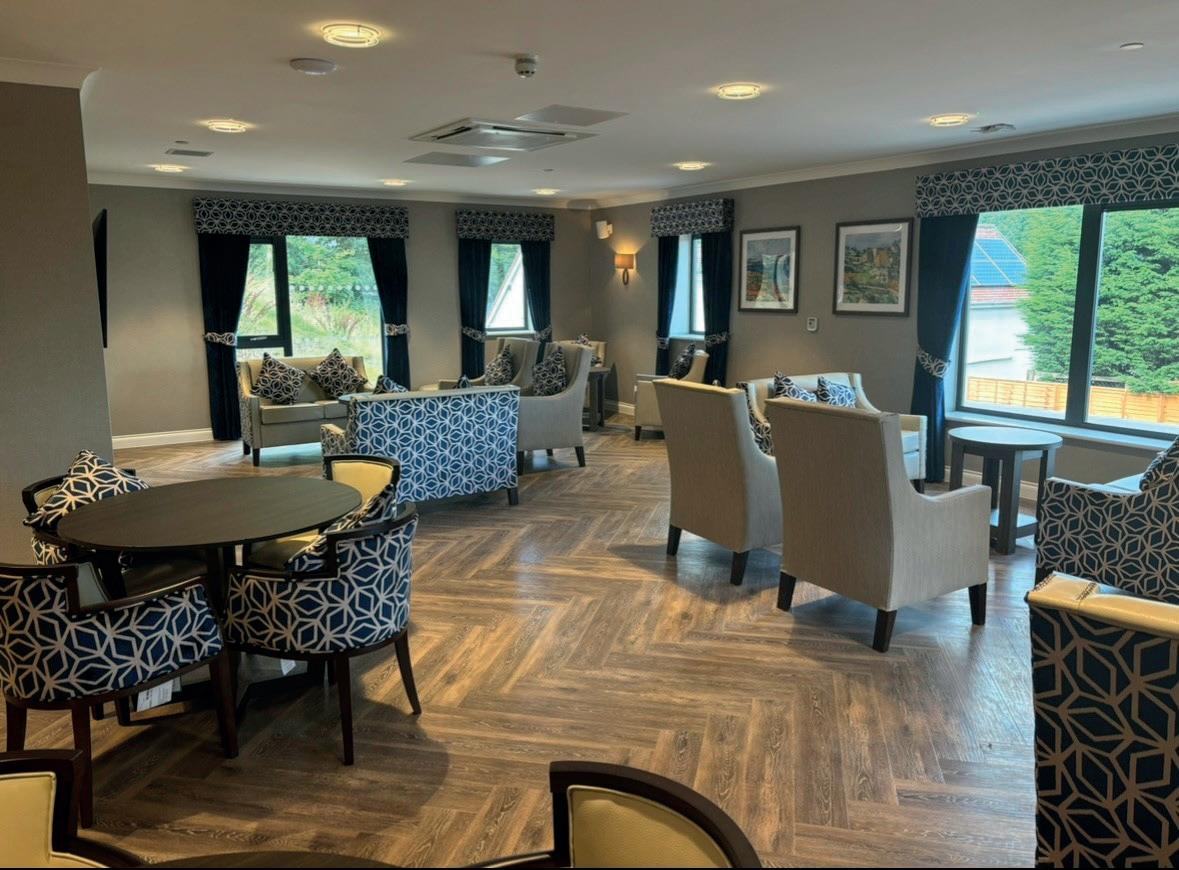
Looking ahead, we’re excited to continue building a home where compassion, dignity, and joy are at the heart of everything we do.
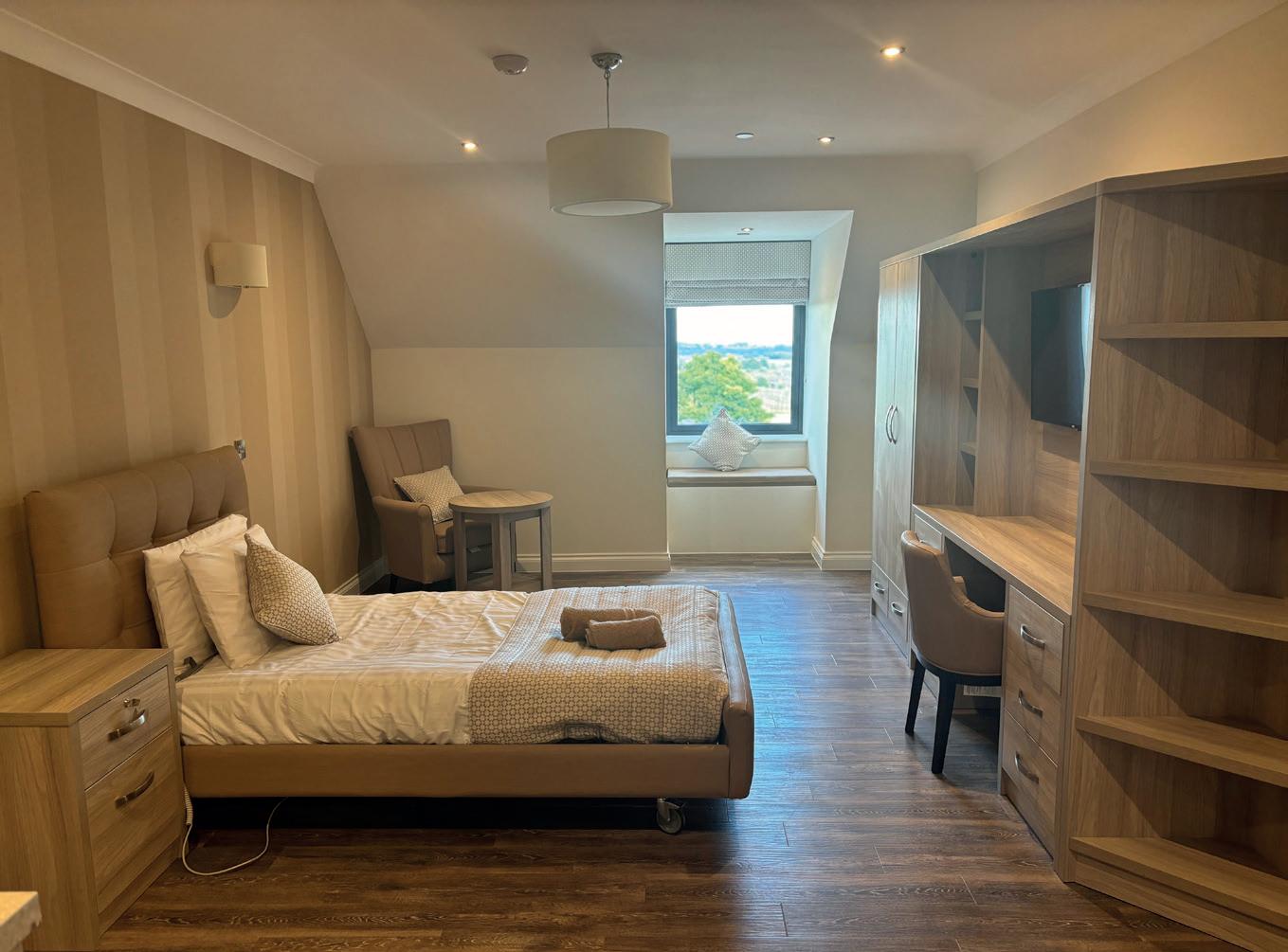
thoughtful design, robust training, and a supportive culture to empower staff and elevate care standards.
Jo told us how new staff are welcomed with comprehensive inductions covering company values, safeguarding, personcentred care, and health and safety. “This builds confidence and sets expectations from day one,” she said.
Jo recognises how acknowledging achievements, big or small, boosts morale amongst her team. Whether it’s positive feedback from residents or completing a tough shift, “celebrating success matters.”
Jo and her team pride themselves on encouraging open communication, mutual respect, and emotional support creates a safe and empowering environment.
“Promoting mental health, offering flexible schedules, and providing access to counselling or wellness resources helps staff stay resilient and engaged,” she added.
We finished by asking Jo what she is most proud of at Restful Homes, Cannock, and what her hopes or future plans for the home are – she said, “We’re proud of the warm, caring environment we’ve created, where every resident feels safe, respected, and truly at home. Our team goes above and beyond every day, delivering person-centred care, meaningful activities, and genuine compassion. It’s the smiles, laughter, and shared moments that make our home so special.
“The holistic approach management and staff take towards residents and their families, understanding their needs and emotions during the time that their loved ones are in our care.
“Looking ahead, we’re excited to continue building a home where compassion, dignity, and joy are at the heart of everything we do. We hope to expand our activities, strengthen our team, and create even more opportunities for residents to thrive.”
At Cannock Specialist Care, the goal is simple: to keep making life better, every single day.
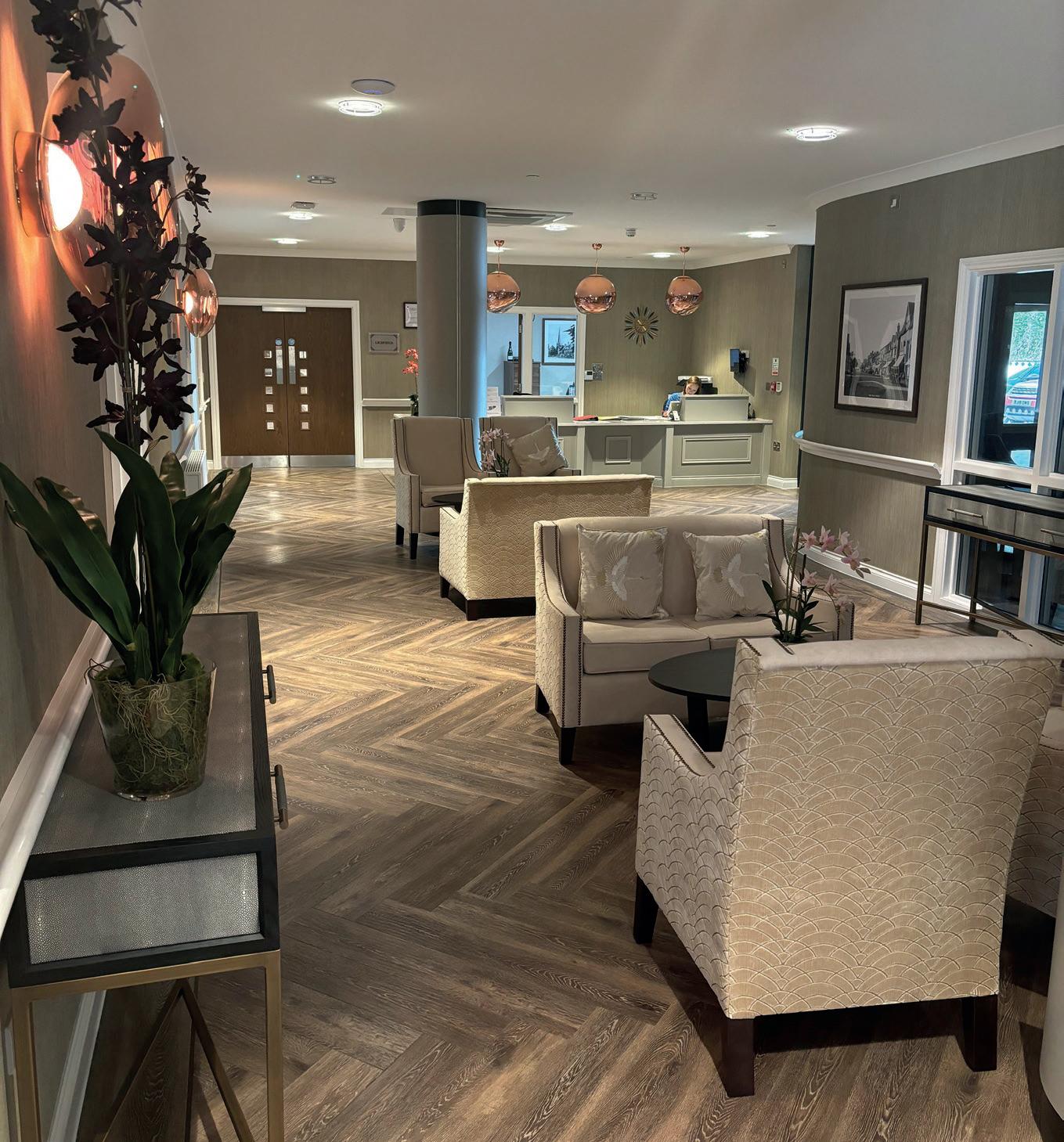
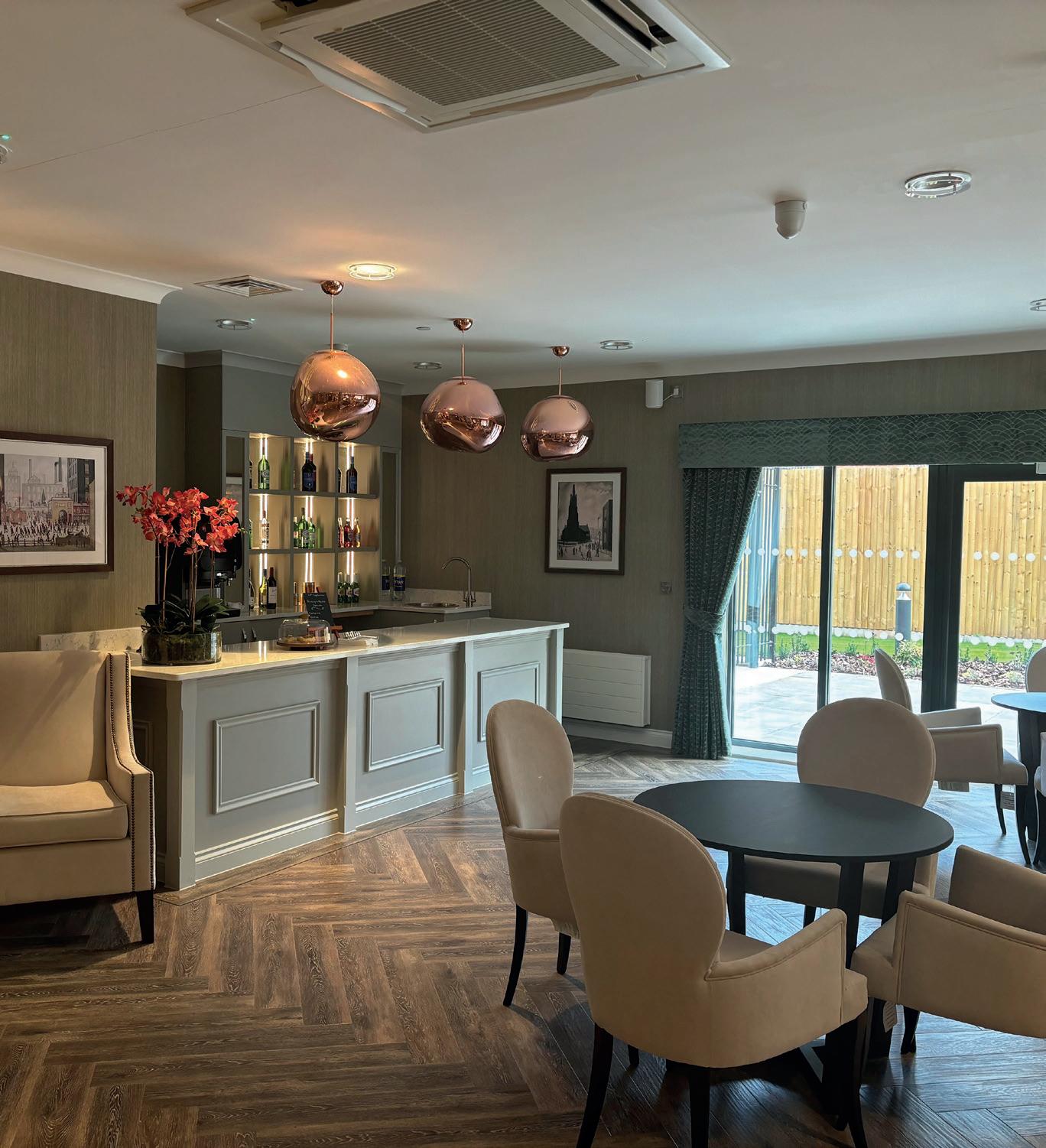
Improved Experiences
How Greetwell Purchasing Helps Care Homes Cut Costs and Improve Resident Experience.

Greetwell Purchasing Solutions Ltd believes that procurement in the care sector should go beyond numbers. Run as a family business, the company exists to support privately owned residential care home operators across the UK in managing their food procurement and supply chains with fairness, transparency, and innovation.
Their mission is simple: to deliver tangible cost savings, safeguard against overcharging, provide unrivalled reporting, and empower care operators to focus on what matters most – the wellbeing
of their residents. The service is entirely free of charge and comes with no contract, giving operators complete flexibility and peace of mind.
In an era of food inflation, rising operational costs, and staffing pressures, Greetwell’s service provides certainty and peace of mind to operators. The company has created a model that is free of charge, contractfree, and built on trust, allowing it to make a measurable difference to clients and their residents. In 2025, Greetwell became B Corp certified,1% for the Planet members, Carbon Neutral certified, and
committed community partners. The business is not only passionate about the care sector but also determined to be a true force for good.
Their work begins with cost savings. The initial consultation for new clients typically delivers around a 10% saving, a significant margin in a sector where every penny counts. One client, PJ Care, has reported savings of at least £10,000 in just 18 months of working with Greetwell. Their Catering Manager, Darren Klein, commented: “It’s a warm and personable relationship we have with the team at GPS. It might sound silly, but they really do make
you feel like their only customer.”
Beyond savings, Greetwell’s ongoing monitoring ensures that operators never overpay. For example, Good Lookin Cookin praised the on-hand account management, which ensures no items are purchased without agreed prices. When errors occur, credits are raised immediately, saving both money and time. This vigilance provides assurance that homes are never left exposed to unnecessary costs. Greetwell also offers clarity in a volatile food market. Through their portal, clients receive direct, month-on-month purchase and price comparisons, broken down by product categories or individual items such as coffee — an area that has seen vast fluctuations in the past 24 months. With this intelligence, clients can be guided towards alternatives that preserve quality while managing costs.
Fundamental to Greetwell’s service is PROVISION, a bespoke reporting tool updated daily with each client’s purchase history. It allows operators to track spend, analyse trends, and adjust for resident numbers — turning raw data into clear, actionable insight.
The company also integrates Civica Saffron free of charge, helping homes build recipes, assess costs, track allergens, and create balanced menus. To support their clients, Greetwell has developed a four-week care menu in collaboration with a qualified dietitian experienced in the residential care sector. Designed to reflect national standards and best practice, the menus provide a practical, ready-to-use tool for catering teams. Together with initiatives such as dementia catering training, this ensures meals are safe, nutritious, and centred on residents’ needs, while giving operators confidence they meet best practice standards.
Alongside this, Greetwell has developed its Switch & Save process. This involves identifying products that clients are already buying but where better-value alternatives exist. These options

are presented clearly to operators, improving awareness and unlocking additional savings without compromising on quality. This proactive approach ensures care homes are consistently benefiting from the most cost-effective procurement decisions, even as the market shifts. In a sector under constant financial pressure, this level of insight and opportunity helps homes maintain control.
The heart of Greetwell’s work is the impact on care home operators and, ultimately, the residents they serve. PJ Care have praised their detailed reporting, illustrated with charts, graphs, and visualisations, describing it as: “As rich and varied as the delicious food we pride ourselves on serving our residents.” Its impact on care is more than just money saving: from dementia catering training to allergen management, Greetwell’s work directly improves residents’ outcomes.
For Capital Care Group, Greetwell achieved 15% savings by switching food suppliers. Their FD, Ravi Rai, highlighted the value of ongoing monitoring: “The team at Greetwell focus on managing daily food costs. This helps ensure we continue to get the best deal. We’re delighted with the level of service they provide – having an in-depth understanding of our costs is essential in the care sector.”
These examples show that the service is not simply about reducing costs. It is about providing the right information and tools to deliver better food, safer nutrition, and improved care experiences for residents.






Marketing
Making Moments
Live sport has a unique power to unite people, spark conversations, and build connections. For care home residents, watching matches together isn’t just about entertainment – it’s about creating moments of shared joy, reducing loneliness, and keeping lifelong passions alive. With research showing that watching sport boosts wellbeing, TNT Sports is helping care homes offer residents more than just a game – it’s a chance to feel part of the action, part of a community, and part of something bigger – we share the details.
How do you think watching live matches can support social interaction and reduce loneliness in care homes?
There is nothing quite like live sport to bring people together to enjoy entertainment in a communal setting. All of the thrills and spills of live sport are best shared, whether that is at the stadium, in a pub or bar or in a living room together in a care home. It gives residents a reason to meet, to watch and to share their passion for their sport and their teams. Sport is the ultimate ice-breaker and provides a starting point for conversations and meaningful friendship at all stages of life.
Studies by Anglia Ruskin University indicates that people who watch sports experience


greater wellbeing than those who don’t – and that this is probably linked to the social aspects of watching sport1
There are opportunities to do this throughout the week on TNT Sports with our line-up including Premier League football, the UEFA Champions League, Autumn Nations Series Rugby, the Gallagher Prem, cycling, Grand Slam tennis, snooker and much more.
Many older fans have followed sports their whole lives. How important is it for TNT Sports to keep long- time fans connected to their favourite teams, especially if they now live in care settings?
Supporting a team can be a lifelong commitment, often one that has
been passed down through the generations. Fans go through the highs and lows of their own lives alongside the successes and failures of their teams. Living in a care home should not be a barrier to staying connected to something that can be so central in people’s lives. TNT Sports provides sport throughout the week and regular opportunities for fans to watch their favourite teams. This season there are more English teams than ever in the UEFA Champions League – Liverpool, Arsenal, Man City, Chelsea, Newcastle and Spurs. Rangers, Celtic, Aston Villa and Nottingham Forest are all in the UEFA Europa League while Crystal Palace and Aberdeen compete in the Conference League. Care home residents can closely follow their progress throughout the competitions alongside our

extensive Premier League coverage. With more rugby, tennis, boxing, motorsport, cycling, tennis and cricket, there is something for everyone on TNT Sports.
How do you think live sport can help connect older people with younger generations, such as care staff or visiting members?family
There is no age barrier to watching live sport. There will be residents, staff and family members who all have an interest in watching the game or discussing the latest action. It is a conversation starter and something that can bring people from across generations
and backgrounds together to share a passion.
It is also good for you. Research has shown that people who watch sports on TV or on the internet were also less depressed than those who did not, and depressive symptoms were even less likely for those who watched sports with increasing frequency.
Many care homes work with limited budgets— does TNT Sports offer any tailored packages or access options for group settings like these?
We also hope that we can offer premium live sport to care homes at a price that means it is a realistic option for their business to be able

to offer this community led benefit to their residents. Prices start from as little as £250 per month for communal areas or just £4.99 for in room.
How can care homes effectively market the fact that they show live TNT Sports content to attract new residents?
TNT Sports has a suite of free marketing tools that can help care homes spread the word about all the live sport coming up. Throughout the season we send free poster packs to customers, containing all the latest fixture information in the biggest competitions. These can be displayed in communal areas to let everyone know what will be screened.
Our website www.tntsports business.co.uk lists all the latest fixtures to ensure staff can keep on top of the sporting calendar. Here you will also find a range of digital social assets that can promote live sport across digital channels. Our Support Squad team is also on hand to help you navigate the best ways to market live sport.
To find out more visit www.tntsportsbusiness.co.uk/care
1. Taking Part Survey, 2023. https://www.aru.ac.uk/ news/this-is-why-watching-sports-is-good-for-you

Essential 5
Authentic storytelling can be an incredibly powerful tool when leveraged in marketing strategies. By sharing genuine voices, experiences, and narratives, a care home can communicate its ethos more effectively than any brochure filled with statistics. We share five ways authentic storytelling can help showcase the soul of a care home as part of a successful marketing strategy.
Highlighting Resident Journeys
Every resident has a unique life story, and care homes can honour those stories while demonstrating their ethos of respect and individuality. Sharing residents’ personal journeys, whether through short videos, written profiles, or photo essays, helps convey that the home values people for who they are, not just for the care they require. When done in a respectful an appropriate manner, a feature about a retired teacher leading a reading group within the home shows how talents and passions are nurtured, even in later years. By telling these stories, the home subtly communicates its philosophy: that residents are active participants in shaping their community. Potential resident’s families will see not just a service, but a place where their loved one’s history and personality are celebrated.
Amplifying Staff Voices
The ethos of a care home is often most visible through its staff, their dedication, empathy, and consistency. Sharing authentic staff stories is a good way to offer a behind-the-scenes look at the culture of care. This could include an interview with a long-serving staff member about why she has chosen to stay, or a day-in-the-life feature following a caregiver as they go about their routine. Stories like this put faces to the values of compassion and trust, assuring families that the home is staffed by people who genuinely care.
Capturing Everyday Moments of Care and Connection
Often, grand events and staged photographs rarely convey the warmth that families are looking for. Instead, authentic storytelling thrives on the everyday: a spontaneous laugh during a bingo game, a resident tending to a garden, or the interaction between staff and residents during mealtime. These small, honest moments bring the ethos of the home to life, demonstrating joy, companionship, and dignity in action. When shared through social media or newsletter, they can help build an image of a living, breathing community rather than a corporate institution.
Engaging Families in the Narrative
A care home’s ethos is not only about residents but also about its relationship with families. By inviting families to share testimonials or stories about their experiences, the home demonstrates openness and inclusivity. A good example of this, is - a daughter might share how her mother’s transition was made easier by the warm welcome from staff, or how she now feels reassured by regular updates and involvement in activities. These family perspectives act as powerful endorsements that cannot be replicated through marketing copy alone, because they come directly from the horse’s mouth.
5 4 3 2 1
Showcasing Community Connections
A care home is rarely an isolated entity and it thrives when connected to its wider community. Storytelling about partnerships with local schools, volunteer groups, or cultural organisations reveals an ethos of openness and engagement. Sharing accounts of children visiting to sing at Christmas, residents attending local events, or collaborations with charities demonstrates that the care home values intergenerational connection and belonging. These stories counter stereotypes of care homes as closed-off institutions, instead presenting them as incredible contributors to community spirit.
The healthcare & care home interior design specialists
Catalyst Interiors is revolutionising the world of interior design with our ground-breaking approach to dementia care environments!
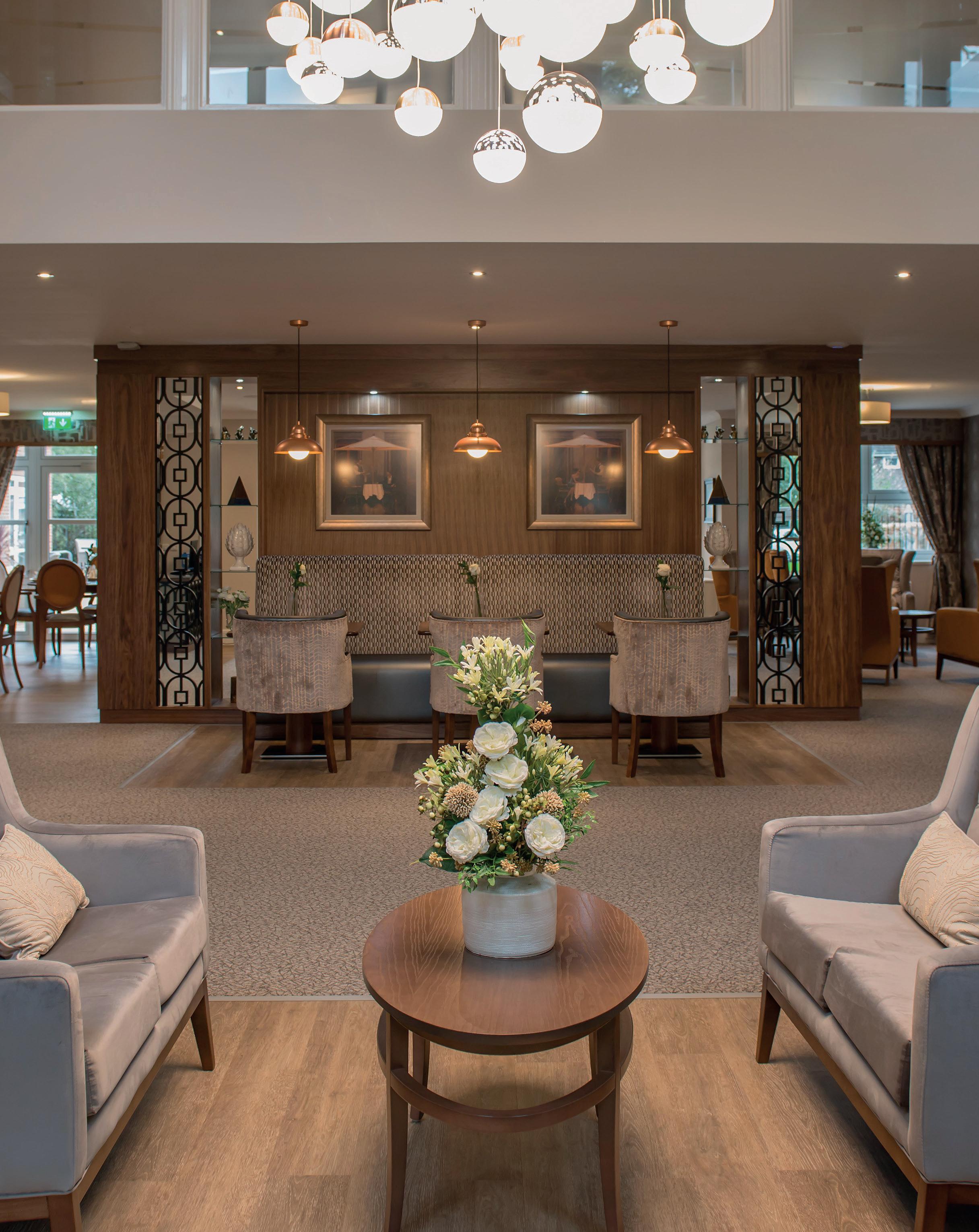


Standing Out
We look at what the recipe to success entails in order to market a care home effectively.
In today’s competitive care sector, effective marketing strategies are vital for care homes to thrive. Beyond simply filling rooms, strong marketing helps build trust, highlight quality of care, and connect with families seeking the right environment for their loved ones. With more people researching online and comparing services before making decisions, care homes need clear, compassionate, and professional marketing approaches.
Rowen Campbell, Head of Sales & Marketing at Aria Care, sees that, given the nature of the way people look for care, a multichannel approach is important, but ultimately, “it’s the authenticity that drives engagement”.
The team at Aria have seen particular success through their digital marketing – search advertising, and location-specific SEO, and are also working more on targeted social media. “People tend to start their searches online and do lots of research there. It’s not just about being visible; storytelling is important, and that include resident spotlights, testimonials from residents and their families, and stories of daily life in the home.
“That said, offline channels shouldn’t be underestimated, our home managers and colleagues are actively involved in the local community they serve. Positive word of mouth is hugely influential in this sector, so building those relationships with local businesses, community groups and healthcare professionals, combined with a strong online footprint, is the sweet spot,” added Rowen.
With more than 17,000 care homes in the UK and around
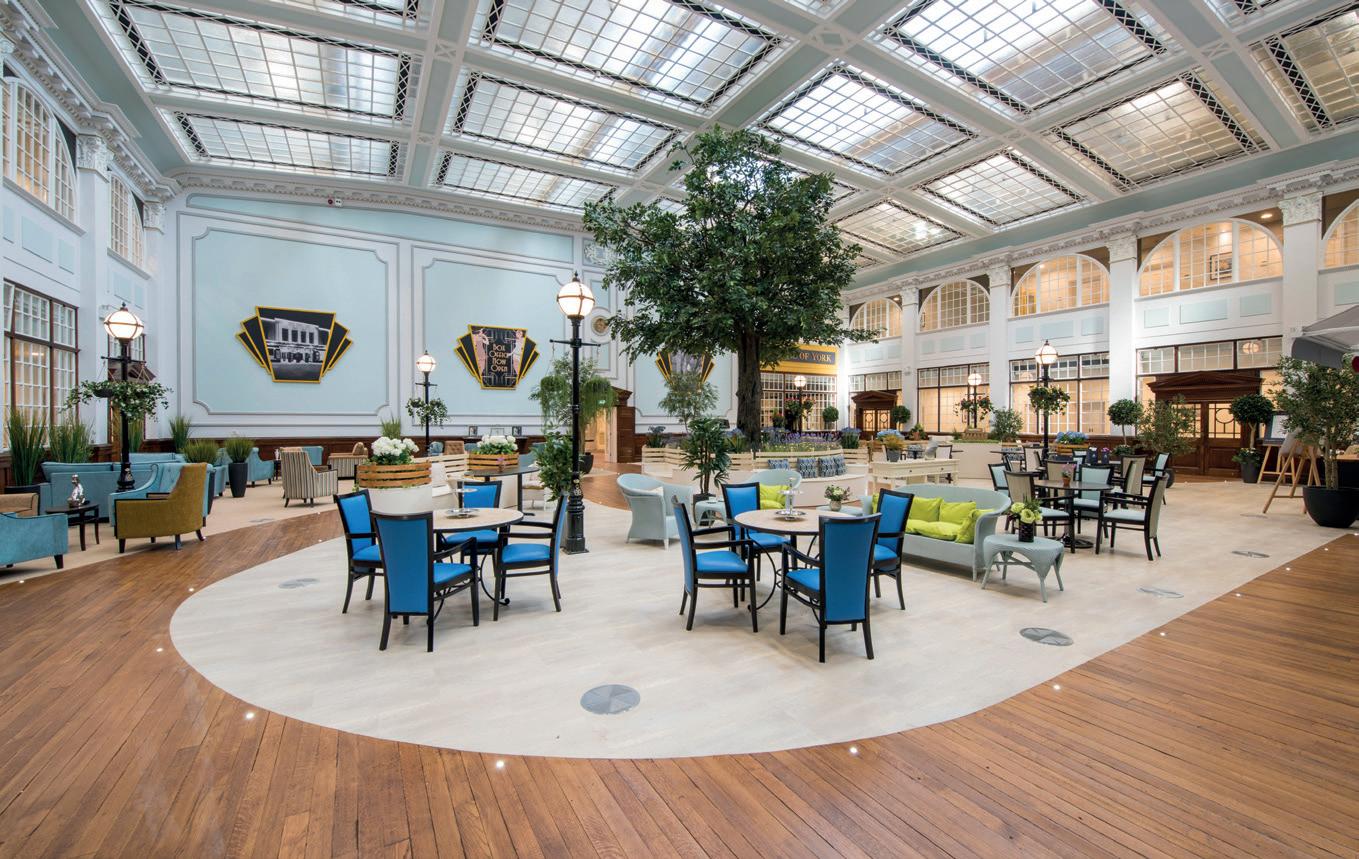
5,500 individual providers, the care market is vast, fragmented, and fiercely competitive.
In such a pressurised and competitive environment, what truly differentiates a thriving care provider from one that struggles is often not just the quality of its clinical care – though that is, of course, essential – but the effectiveness of its communication.
Rhiannon Williams, Managing Director at Zen Communications, said, “Whether it’s articulating a clear brand identity, engaging staff, keeping families informed, or building trust with regulators and local communities, strong and consistent communication is the thread that ties everything together.”
Every care home has its own story. Some are family-run and pride themselves on a warm, homely feel. Others specialise in dementia care, complex needs, or respite services. Yet, too often, providers fail to communicate what makes them special - leaving prospective residents and their families with little sense of why they
should choose their facility over another for their loved ones.
Rhiannon explained, “Your brand identity is not just a logo, a colour palette, or a strapline. It’s the promise you make and the experience you deliver - the way your team greets (and communicates ongoing with) families, the atmosphere of your communal areas, the activities programme, even the meals you serve.”
To create a strong identity, Rhiannon advises beginning with your core values. Are you passionate about independence and dignity? Do you focus on enriching residents’ lives through meaningful activities?
Once you have clarity on this, weave it consistently into your communications – from your website and marketing brochures to your social media and wider media activity.
“Equally important is ensuring your internal team become your biggest cheerleader,” Rhiannon added. Your staff should not only understand your ethos and
values but they should embody them daily. “When your team truly lives and breathes your vision and mission, they communicate it naturally, passionately, and consistently to the outside world. From answering phone calls and greeting visitors to sharing stories on social media, every interaction becomes an opportunity to reinforce your identity.”
When your internal culture and your outward communications are aligned (and when those important to you are all ‘on-message’), your voice becomes clear, consistent, and authentic. Families understand what you stand for, staff can articulate your ethos with pride, and stakeholders recognise what sets you apart in a crowded market.
When it comes to digital marketing, Adele CurranWoodthorpe Founder of Woodthorpe Comms, sees that Facebook in particular is a strong platform because its demographic skews older - exactly the age group most likely to be decision-makers for loved ones entering care.
“Targeted ads and posts here are a cost-effective way to reach the right audience, while partnerships with trusted micro-influencers and positive online reviews further build confidence. The real advantage is measurability: every campaign can be tracked and refined, ensuring providers get the best return on spend,” she added.
Using community engagement
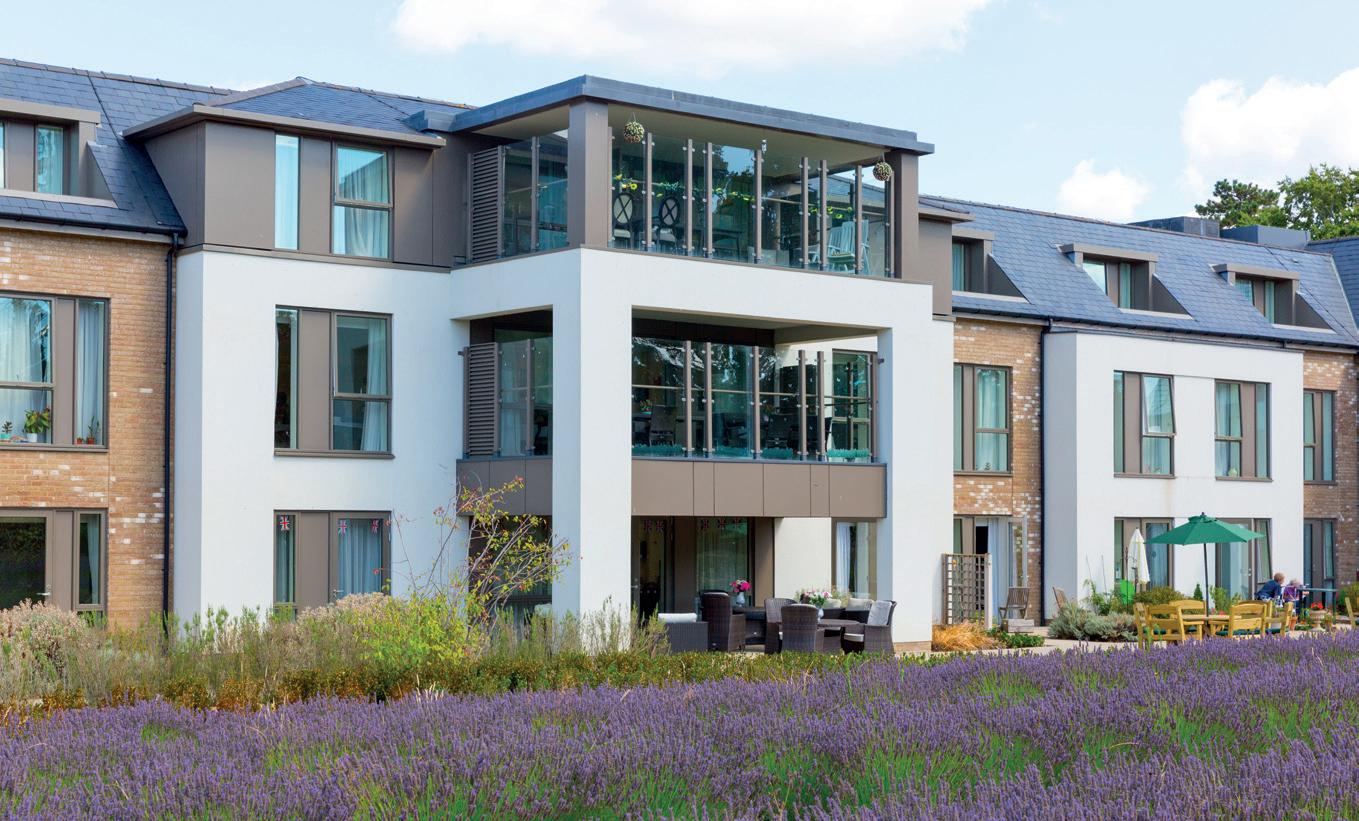
and local partnerships to raise awareness and strengthen the reputation of a care provided can be really beneficial. Adele agrees, “Partnering with trusted local organisations – such as schools, nurseries or family-focused groups, places your brand alongside other community pillars. This not only raises awareness but also strengthens reputation by showing families you are visible, approachable, and invested in the community they know and trust.”
We asked, Jacqui White, Director of Marketing and Communications at Care UK, in such a crowded market, what she thinks are the key factors that truly make one care home stand out from another, to which she said, “It comes down to care quality in its broadest sense. Meeting regulators’ requirements is absolutely key, but this is a minimum standard. The more
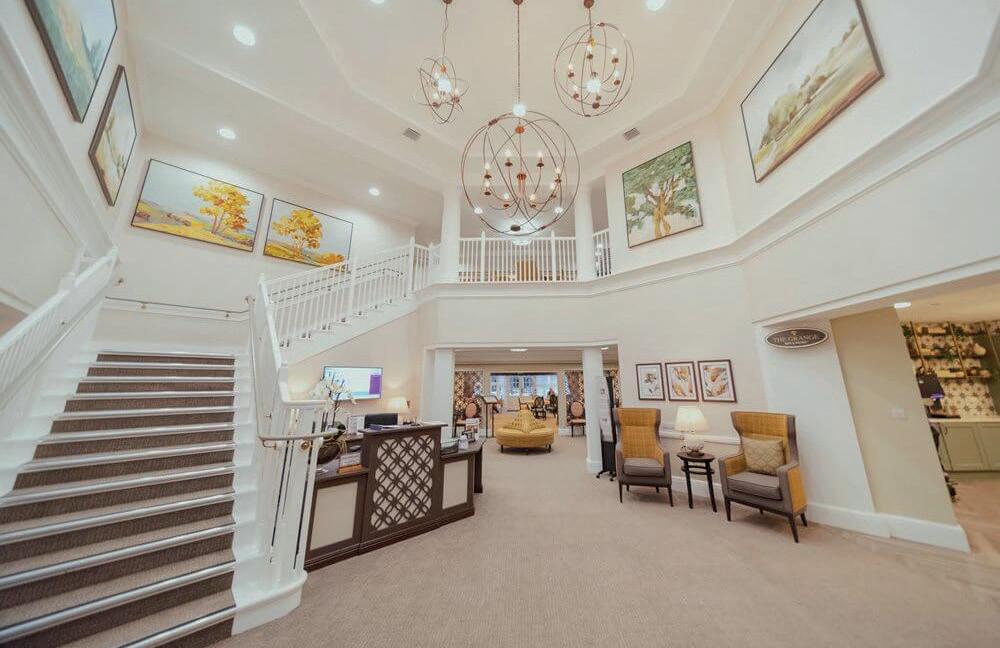
intricate aspect of delivering care quality is meeting the needs of those who choose to live in our homes and the families and loved ones who trust us with their care.”
At Care UK, they have a set of brand standards to support the group. “These have been developed with years of customer insight to ensure we are hitting the key notes that drive both a family’s choice of care home and their ongoing satisfaction with the service we provide,” Jacqui added.
Given the sensitivity around choosing a care home, Jacqui recognises the importance of including real evidence of quality and ensuring that any claims or marketing straplines are backed up. At Care UK, they talk a lot about being Trusted to Care – “We back this up with some of the strongest regulatory ratings in the sector (including operating more Outstanding-rated homes than any other provider); by the recognition we receive through awards at both a home and corporate level and through customer satisfaction measures, including a Net Promoter Score,” finished Jacqui.
Ultimately, in a sector built on trust, the providers who thrive are those who communicate with clarity, compassion, and credibilityshowing not just what they do, but why it matters to the people and families they serve. In today’s care landscape, great marketing isn’t a bolt-on; it’s an essential extension of great care.
The Power of Authenticity
In a sector built on trust and compassion, how care homes communicate has never been more important. Families making the difficult decision of where their loved one will live needs more than polished brochures and staged photography. In this piece, David Huckerby, Managing Director of Conteur, explores why authentic storytelling is now at the heart of effective care home marketing.
Choosing a care home isn’t easy. Families face uncertainty in a time where emotions are already frayed. No longer is it enough to solely wow with polished brochures, care homes need to be able to speak to audiences’ hearts with authentic, real-life storytelling. Prospective residents and their loved ones need reassurance and transparency, particularly following the pandemic where some families were left feeling isolated and without control.
Human-led marketing stories can connect you to target audiences, building trust and earning quality enquiries.
Why AuthenticityMatters Now
Lockdowns reshaped how families view care homes. With visiting restricted, glossy brochures and polished websites rang hollow when people desperately wanted to know what life inside really felt like. News headlines about outbreaks and staff shortages further fuelled scepticism, creating a gap between official messaging and lived reality. Homes that shared honest updates - through resident diaries, candid videos or staff reflections - helped bridge that gap and reassure anxious families. That experience left a lasting mark. Today, people expect this amount of transparency. Authentic, human stories are no longer optional; they are the foundation of trust.

Residents’ Stories
Sharing residents’ stories brings care homes to life in a way no brochure ever can. Families want to see personalities, not just facilities, and to know that their loved one will be valued as an individual.
A short profile can highlight hobbies, friendships and the small daily joys that define life in the home - whether that’s gardening, painting, or leading a choir aged 92. With consent, these glimpses reveal dignity and community in action. Instead of saying “we offer activities,” a resident’s voice shows how those activities truly enrich lives.
Staff Profiles
Families want to know who’ll be caring for their loved ones and staff profiles make that human connection possible. A carer’s story - their history, values, interests and expertise - adds
warmth and credibility that no stock image can provide. Provide short videos, written spotlights or personal reflections that showcase your team’s professionalism and compassion.
For staff, being recognised builds pride and morale; for families, reassurance that their relatives are in safe, caring hands. By highlighting the dedication behind the uniforms you will turn employees into trusted individuals, strengthening both reputation and relationships.
Authentic marketing is now essential, not optional and those real stories humanise care, reassuring families and strengthening reputation. By placing residents and staff at the heart of storytelling, care homes will show they are vibrant, trustworthy communities - far better than pages of a brochure could. conteur.co.uk
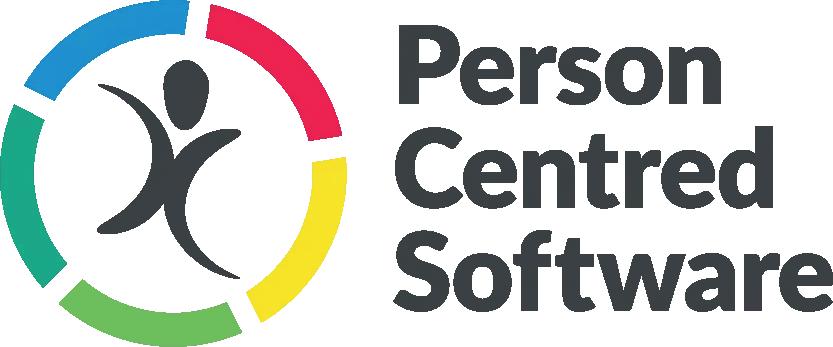

You already know how our Connected Care platform helps support you to care for your residents. Want to learn how insights from the data you’re logging every day can transform your residents’ daily happiness, give your team more confidence and demonstrate the excellent care at your home?
Don’t miss our talk at the Care Show, where we’ll introduce you to our new care intelligence platform, IQ. We’ll show you how IQ’s benchmarking capabilities are transforming daily care decisions for one of our early adopters, from preventing falls to identifying the smallest of interventions to bring back a resident’s smile. Wed 8 Oct 2025 | 3 – 3.30pm | Business Theatre The care revolution: from guess work to evidence
The AI Revolution
The 2025 Marketing Revolution: Why Google’s $227 Billion Gamble Is Transforming How Residents Find Your Care Home.

Iwoke up suddenly at 4:10 AM in a cold sweat. In my head, an epiphany that shook me to my core: Marketing the world over has fundamentally shifted and will never be the same again.
The clarity was overwhelming – this was not just AI hype. The way we must market our care businesses has truly changed forever. And no one realises it’s already happened.
So what triggered this middle-ofthe-night revelation?
On 12th September 2025, Google made an announcement that was equally shocking and bold – a seismic shift that will determine which care homes thrive and
which become virtually invisible to potential residents, particularly selffunders.
The Fundamental Shift to Conversational Search
Until now, when someone searched “care homes in Doncaster,” Google kindly gave a list of results and left us mere mortals to do the donkey work. We’d have to spend hours sifting through the multitude of websites, comparing options, and finding the hidden gem that is the perfect care home for our loved one.
That era is over.
In truth, it ended with the launch
and meteoric rise of ChatGPT. This enabled our computers to chat with us in plain English. Now Google, for so long the undisputed, invincible king of search, could see its empire crumbling.
Instead of turning to Google, people were now having conversations with AI. Instead of typing keywords, they’re saying, “I need to find a care home for my mum in Doncaster. She needs dementia care, loves gardening, and I’d like somewhere within 20 minutes of my house.”
The AI conducts comprehensive research and, in just a few seconds, presents personalised recommendations. Google no
longer gets a look-in with the decision maker - you.
Faced with becoming a dinosaur, Google is fighting back. It is now actively training us (some might call it brainwashing) to use Gemini, its own AI, through relentless TV ads. You must have seen them.
One shows people describing exactly what they want in a pizza restaurant rather than just searching “pizza near me,” and another features young women using Google’s Gemini to analyse skincare products in real-time in the shop and advise them which is best.
These aren’t just ads; they’re behavioural training designed to keep us searching with Google.
Google’s Business Model Transformation
Let’s be clear, Google doesn’t want to change; it has to. It generates $227 billion annually from you and me clicking on the ads at the top of the search results. If we no longer see those ads because AI’s doing the work, Google literally loses everything.
Its response? Keep us on their platform by transforming their core search product into a conversational AI experience while finding new ways to monetise these extended interactions.
They’re betting $227 billion per year that AI-driven search will ultimately be more profitable than the keyword-based model that made them one of the world’s most valuable companies.
If they’re that sure, I wouldn’t be against them. Would you?
But what has all this got to do with occupancy and finding new residents?
How AI Comprehensively Evaluates Care Homes
Here’s where the stakes become enormous for care providers. When someone has a conversation with AI to find the best care home for them, it doesn’t just look at your website. In seconds, it analyses:
• Your entire website content and structure

• All reviews across Google, Carehome.co.uk, Facebook, and other platforms
• Your social media presence, including post frequency and engagement
• Press coverage, both positive and negative
• How strong your presence is in specialised directories
• Local community involvement
• Service descriptions and specialisations
• Staff information and qualifications
• Pricing transparency
• Location data and accessibility
From this vast digital footprint and the context of its conversation with the searcher, the AI determines how well your home matches their needs.
This is your win-or-lose moment. If your digital presence is robust, consistent, omnipresent and positive, you’ll appear at the top of this very short list. If it’s limited or inconsistent, you simply won’t appear at all. It’s winner takes all.
The Self-Funder Connection
This seismic shift has particularly profound implications for attracting self-funders. Their families typically conduct extensive research before making decisions. They’re precisely the demographic most likely to embrace AI-assisted search for
such an important life decision.
So, if you want to attract selffunders, you need to embrace the change. Today.
The Digital Arms Race
Like it or not, you are now in a digital arms race.
The longer you wait to build your digital presence, the harder it becomes to catch up. This isn’t just about having a website anymore – it’s about creating a digital ecosystem that consistently signals quality, authority, relevance, and trustworthiness to increasingly sophisticated AI systems.
The Time to Act Is Now
2025 will be remembered as the year everything changed. To continue to be found through search, all care businesses must begin to systematically optimise their entire digital footprint –website, reviews, social media, local press relationships, and industry visibility.
Those who adapt quickly will thrive long into the future and capture the lion’s share of selffunders in their area.
Those who don’t will gradually wither on the vine, becoming invisible in the new AI-driven search landscape.
After all, if Google is betting $227 billion a year on the new AI search, shouldn’t you embrace it too?
carehomemarketingexpert.com
Enriching Lives
White Oaks leads the way in food safety.
Ensuring food safety in care homes isn’t just best practice – it’s a necessity. Given the heightened vulnerability of residents due to age and health conditions, the risks associated with food contamination or allergens are significantly greater.
At White Oaks, the senior living division of Compass Group UK & Ireland, robust safety measures are embedded into every stage of their food service across all the care settings they operate in – from care and residential homes to senior living sites and hospices.
White Oaks Health & Safety Manager, Jeanette Branwhite explains: “We work closely with our operational teams and clients to identify the safest and most effective ways to produce delicious meals for residents. These can be complex environments, and we are here to advise and support home teams in meeting all legal requirements.”
Without strict food safety procedures, care homes can become vulnerable to illness outbreaks. Improper storage temperatures or crosscontamination can lead to foodborne infections.
To counter this, all White Oaks food safety systems are designed and agreed with their Primary Authority, Luton Council’s Environmental Health Department,


under a legally binding agreement. All their catering staff are trained in HACCP, and they reinforce the importance of food safety in all their care settings through regular audits and inspections by their HSE-trained team and ISOQAR.
Texture-modified meals are an essential yet often overlooked aspect of food safety in care homes. To minimise the risk of choking and promote safe eating, White Oaks offers a range of meals that ensure comfort, safety, and nutrition.
Allergy awareness is a cornerstone of food safety, especially as residents may be on medications which can mask allergic symptoms or increase their severity. White Oaks holds Food Profile Meetings involving the resident, a family member, or a care team representative to communicate their individual dietary needs and preferences with the dietitian and on-site chef manager. This ensures meals are safe and supportive of overall wellbeing.
“Thanks to our proactive approach, we’ve maintained 5-star food hygiene ratings across our White Oaks’ business,” explains Braithwaite. “And, for the past five years, have exceeded Gold Medal status in the ROSPA Safety Awards, achieving Highly Commended in 2025.”
The White Oaks commitment to protocols, training, and attention to detail means every resident receives meals prepared with precision and care. From maintaining audit-ready kitchens to adapting meal textures, they are proud to lead the way in creating safer, healthier dining experiences for all.
If you would like to speak with the White Oaks team about your individual needs, they will be exhibiting at Care Show Birmingham on 8th & 9th October, on Stand D57.
www.white-oaks.co.uk


WHY US
COMPLEXITY
We pride ourselves on being the “good Sage guys to deal with”, having a team with decades worth of combined experience and the capability to manage the project in-house.
Say goodbye to complex income streams.
Report across multiple entities and locations.
Reduce human error with machine learning, automation and AI.
AI
Automate repetitive accounting tasks.
Process invoices and match to purchase orders.
Focus on growth objectives and strategic planning.
Users say Sage Intacct has made their roles easier, helped them make “smarter and faster decisions” and enabled them to have more impact.

BUDGETING
Reliable real-time views, customisable reports, and dashboards.
Integrate financial and non-financial data.
Enhanced strategic planning and decision-making.
SECURITY
Eliminate on-premise risks. Frequent backups, automatic updates and 24/7 monitoring.
Seamless integration with other systems.

Scan to learn more or contact us at 01332 959 008 Email: sage@pkfscs.co.uk

Supporting Independence
One of the most impactful innovations to supporting dignity, and connection in care is Be My Eyes, a globally trusted accessibility solution designed to support people who are blind or have low vision. In this interview, Andy Bailey, CMO at Be My Eyes, shares how the platform works in practical terms and why it has particular value for care homes.
For those who may not be familiar, can you give us a clear overview of Be My Eyes?
Be My Eyes is an accessible tech platform that connects blind or low vision users who want assistance, with customer support teams and individuals, through live video and AI. With over 900,000 users and support across 180 languages, Be My Eyes brings accessible support directly into everyday life across the world.
Live video: Through one-way video and two-way audio, users can connect with specialised customer service agents or nurses in a care setting for example, who help them interpret visual information, from reading labels to troubleshooting devices.
AI: The app also features AI-powered support through Be My AITM, which can describe photos and images in real-time with great detail, often resolving many queries without human assistance.
How does Be My Eyes work in practical terms, and what makes it especially relevant for care homes looking to enhance independence and dignity for their residents?
Users simply point their phone’s camera at an object or situation and receive real-time assistance from a carer via a one-way video, two-way audio call or
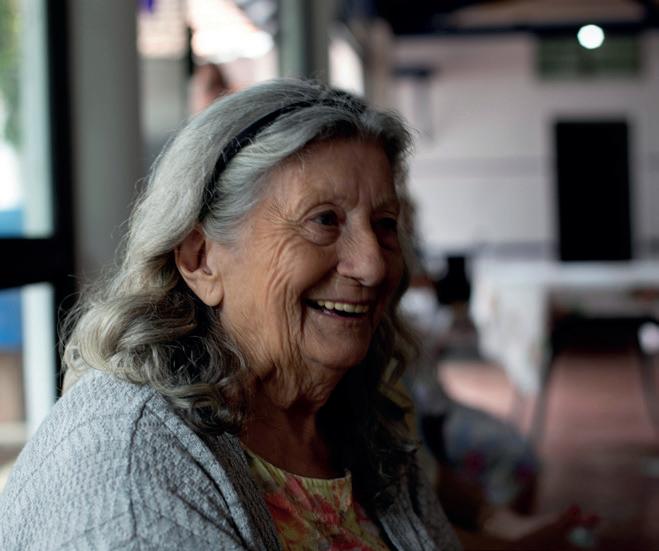
by using Be My AITM. For care homes, this means residents can independently read menus, get detailed descriptions from their family photos, get assistance choosing clothes to wear, navigate unfamiliar environments; the list of opportunities is endless, all without needing immediate staff intervention. Additionally, residents are also able to set up private groups within the app to connect with family members and friends for support when needed. This creates meaningful, low-friction moments of connection while fostering autonomy and reducing unnecessary staff strain.
What advice would you give to care home managers and operators who are introducingconsidering Be My Eyes to residents and staff?
For care home managers introducing Be My Eyes, start by framing it as a tool for empowerment and not just assistance. Provide a simple

onboarding session for residents and staff, demonstrating how to use the one-way video and twoway audio call option as well as Be My AITM for daily tasks like reading instructions or identifying objects. Choose a few practical, low- stakes use cases to build comfort and confidence. Ensure staff are aware this isn’t a replacement for care, but a way to extend residents’ independence between interactions.
How do you see Be My Eyes evolving, and what opportunities exist for care homes and operators to get involved or benefit from the service?
As visual AI capabilities expand, more resident needs can be met instantly without waiting for staff. With over 90% of common requests handled by Be My AITM, care homes can reduce task loads while giving residents more independence throughout the day. bemyeyes.com/business



Beyond Beautiful
Why Interior Design is a Clinical Tool in Care Homes.
When we think of clinical tools in care homes, we picture medication, equipment, or therapeutic programmes. Rarely do we consider chairs, colour schemes, or the way light falls in a lounge. Yet interiors can be just as critical to resident wellbeing and staff performance as any clinical intervention.
A corridor, for instance, might appear purely functional. But for a resident living with dementia, poor lighting or patterned carpets can cause anxiety or falls. In contrast, a corridor with natural light, clear colour cues, and open sightlines can restore confidence and independence. This is the quiet power of design: not decoration, but care in action.
Design as Part of Care
Interior design is too often underestimated. Furniture, finishes, and layouts are sometimes treated as afterthoughts, yet every choice shapes residents’ health and quality of life.

If a chair blends into the floor, someone with reduced sight may struggle to sit safely. Add contrast edging, and the risk of falls is reduced. Flooring must be chosen carefully too: glare or bold patterns can appear hazardous and discourage walking. Even bedroom

layouts matter, placing a bed in sight of the bathroom can support independence, while poor layouts increase reliance on staff.
When design is seen as part of care, it becomes clinical. The right environment empowers residents, reduces accidents, and promotes dignity. Crucially, these principles should not be seen as costly upgrades but as fundamentals built in from the start.
Impact on Dementia and Wellbeing
For residents living with dementia, design is especially powerful. One overlooked element is the light reflective value (LRV) of surfaces. When walls, floors, and skirting share similar LRVs, boundaries blur. Adjust the contrast, and rooms become safe to navigate.
Colour and texture affect mood and cognition too. Calm tones reduce anxiety, while vibrant colours highlight key areas such as toilets or communal hubs.
Acoustic treatments soften noise, and artwork or tactile features can stimulate memory, conversation, and wayfinding.
Far from “nice extras,” these interventions reduce agitation, prevent isolation, and maintain identity. Increasingly, they form the foundations of experiential design.
Introducing Experiential Design
Experiential design builds on dementia-friendly principles, embedding them into daily life. It shifts focus from appearance to lived experience.
That might mean a lounge styled like a café to encourage conversation, sensory gardens that change with the seasons, or communal spaces that adapt throughout the day, bright in the morning, calm in the evening. These touches may not seem clinical, but they strengthen wellbeing and quality of life. Importantly, they need not add cost. When planned from the outset, they shape uplifting homes without inflating budgets.
Supporting Staff and Efficiency
Design also affects staff. Care work is demanding, and the environment influences wellbeing and efficiency.
Thoughtful layouts reduce unnecessary walking, keeping teams close to residents. Integrated

nurses’ stations allow discreet supervision without breaking the sense of home. Ergonomic furniture reduces strain, while uncluttered spaces minimise accidents.
Environments that support staff boost morale, improve retention, and raise overall quality of care.
Looking Ahead
Design also shapes regulatory outcomes. Inspectors comment on whether homes feel safe, homely, and supportive of independence. Well-designed interiors contribute to stronger ratings, higher occupancy, and reputations that set homes apart.
The future lies in making

experiential design the norm. The sector is moving beyond “minimum compliance” towards spaces that enrich life and bring people together. Technology will increasingly blend with interiors, from adaptive lighting to discreet monitoring systems.
The next chapter of care design will be defined not by how homes look, but by how they make people feel. And that future will only be sustainable if these principles are seen not as optional, but as fundamental to good design: practical, achievable, and affordable.
When done well, interior design becomes almost invisible, not because it isn’t noticed, but because it allows residents and staff to live and work at their best. The safest corridors are those residents don’t fear to walk down; the best lounges are those filled with conversation and laughter.
Care homes are not just buildings, they are lived experiences. And when we see design not as decoration but as both a clinical tool and an experience to be lived, built in from the start. We create homes that are truly beyond beautiful: places that enable dignity, independence, and wellbeing every day.
By Managing Director, Mike Davies
Maximising Value
Montane Care: Delivering Expertise and Confidence in Care Home Transactions.
As the UK care sector faces increasing pressures, ranging from tighter regulation and rising operating costs to workforce shortages and shifting demographics, care home owners and operators need partners they can trust to help them make the right decisions at the right time. Montane Care is that partner.
What sets Montane Care apart is our singular focus on the care sector?
Unlike general business brokers, we live and breathe this market. Our specialist knowledge, deep industry connections, and ability to combine transactional expertise with practical sector insight mean we can consistently deliver results that protect value, minimise disruption, and help clients achieve their goals, whether they are buying, selling, refinancing, or reviewing their insurance cover.
How do you see current market trends and how is Montane Care helping clients navigate those challenges?
The current market is defined by complexity; operators face staffing pressures and wage inflation, regulatory inspections are more rigorous, and financial performance is under greater scrutiny. Yet, demand for highquality care homes remains strong, driven by demographic growth and investor appetite for wellrun assets. Montane Care guides clients through this environment by providing a clear strategy, robust buyer networks, and access to tailored finance and insurance solutions.

How
do
you work with care home operators?
A recent success story demonstrates this approach in action. We were instructed to manage the confidential sale of a regional operator’s portfolio. By leveraging our relationships, we generated multiple competitive offers in a short timeframe, secured funding solutions through Montane Finance, and worked closely with both seller and buyer through due diligence to completion. The result was not just a smooth transaction, but a lasting partnership, where both parties felt supported and confident in the outcome.
What advice would you offer care home operators?
For care home owners and
operators exploring expansion or considering an exit, our advice is clear; plan early and seek guidance from sector specialists. Pitfalls often occur when financial, operational, or compliance issues are left unchecked until late in the process. Working with a partner like Montane Care ensures those risks are identified and addressed, giving buyers confidence and maximising value.
At Montane Care, our role goes beyond brokering deals, we are long-term partners in success. By combining market expertise with a discreet, client-first approach, we help care providers unlock opportunities, overcome challenges, and secure the future of their businesses.
montanecare.co.uk



YOUR TRUSTED PARTNER IN CARE HOME SERVICES
MONTANE CARE | FOR THE JOURNEY
Our mission is simple: to empower care home owners, investors, and operators with the knowledge, resources, and support they need to thrive in this vital industry. Whether you’re a seasoned operator looking to expand your portfolio, a first-time buyer entering the market, or an owner considering your exit strategy, Montane Care is here to guide you every step of the way.
Rethinking the Cloud
How Gold Care Homes Addressed the Now and Planned for the Future using Sage Intacct.

In the dynamic social care sector, adapting to change is crucial. Gold Care Homes, a family-owned organisation with over 200 employees, recently embarked on a digital transformation journey following a period of immense growth. Renowned for their dedication to enhancing residents’ lives, their expansion and acquisition of new care homes necessitated a shift from Sage 50 to the advanced, cloud-native Sage Intacct.
The Need for Change
For over a decade, Gold Care Homes relied on Sage 50. However, rapid growth brought challenges
that could no longer be managed with their existing system. Issues such as data management, slow performance, and manual processing became increasingly problematic. The acquisition of new care home locations further complicated matters, making consolidation across multiple entities and generating reports a pressing need. Recognising these challenges, Director of Finance Vivek Goradia and his team decided to migrate to a cloudbased solution to support their growth.
The transition to Sage Intacct was a collaborative effort between Gold Care Homes and PKF
Smith Cooper Systems (PKF SCS). Consultants Ian Barbour and Haris Naeem from PKF SCS worked closely with Vivek’s team, adopting a holistic approach to understand their needs. A key focus was on reporting, particularly multi-entity management. Gold Care Homes used Sage Intacct to ensure accurate, location-specific, information was accessible and reported to regional managers.
The Results: Enhanced Efficiency andPerformance
The implementation of Sage Intacct brought about significant improvements. The cloud-native
solution enhanced performance and allowed system access from anywhere. Vivek Goradia praised the collaboration with PKF Smith Cooper Systems, noting that adding new entities or locations became easier, eliminating productivity bottlenecks, and manual data consolidation in Excel became a thing of the past.
Reporting was also transformed with Sage Intacct. Driven by Dimensions and Dimension Groups, Sage Intacct now provides realtime reports on homes, companies, and regions. The granularity of reporting was a game changer. As a care group with multiple sites, Gold Care Homes can now analyse each home’s performance individually, as opposed to looking at the company-wide performance. Plus, user-friendly tools empowered Gold Care Homes to create and amend reports independently.
Like all homes, multiple income streams can be difficult to manage, but Sage Intacct provides Gold Care Homes with a clear view of their entire financial landscape. Their figures are now updated instantaneously each time a new transaction is entered without any manual or human intervention.
The benefits of Sage Intacct extended beyond financial management. Gold Care Homes incorporated non-financial data, such as bed occupancy, into KPI reports and dashboards, offering a comprehensive view of fiscal performance and operational trends for enhanced decision-making

These advancements now offer Gold Care Homes a comprehensive view of operations for better, informed, decision-making.
Conclusion
Gold Care Homes’ journey with Sage Intacct and PKF Smith Cooper Systems showcases the power of digital transformation in social care. By embracing change and advanced technology, they addressed immediate challenges and positioned themselves for sustainable growth and excellence in care. This case study highlights how your finance system can be optimised as a strategic tool to drive efficiency, improve performance, and enhance care quality.
What is Sage Intacct?
Sage Intacct is a powerful, cloudnative financial management solution built for growing businesses. Its real-time, multi-
dimensional reporting, enables faster, data-driven decisions. With seamless automation, scalability, and deep integration capabilities, Sage Intacct streamlines complex accounting processes— empowering finance teams to work strategically and boost efficiency, Who are PKF Smith Cooper Systems?
PKF Smith Cooper Systems is a multi-award-winning Sage Business Partner, delivering expert consultancy, implementation, and support for Sage 200 and Sage Intacct. Renowned for our deep technical knowledge and customerfirst approach, they empower UK businesses to streamline operations, unlock software potential, and scale confidently with tailored, futureready financial solutions. www.pkfscs.co.uk.

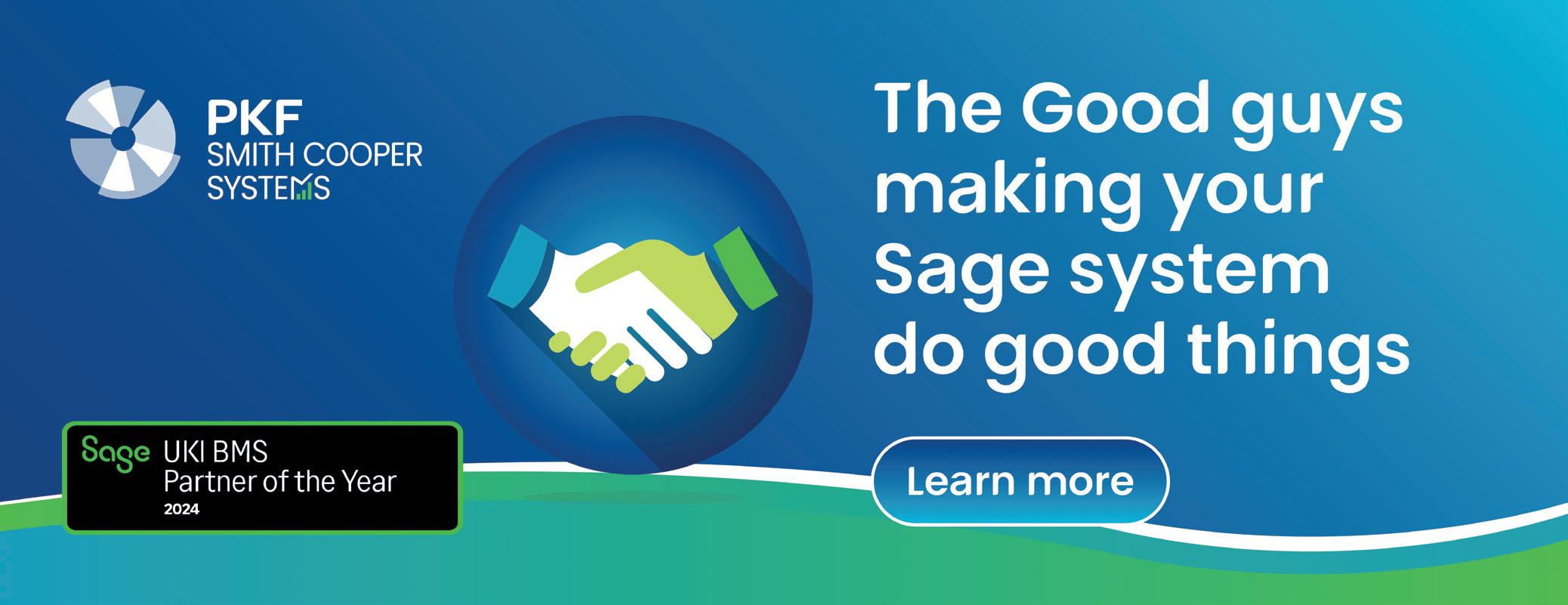
Stories That Stay
At Care Home Magazine, we know that meaningful activities are at the heart of happy living. This month, our focus is on life story workshops - a creative blend of journaling and scrapbooking that helps residents reflect on their past, celebrate special memories, and share stories with others.

Keeping residents busy in a care home is essential to enriching their lives, and introducing regular activities is a perfect way to do this. Offering a varied schedule of dates and times which residents can look forward to is essential in boosting their wellbeing.
When moving into a care home, sometimes, residents feel as though they’ve left behind the life they once had – despite this not being
the case. In order to reinforce this, encouraging them to re-live moments of their past life and old memories can be an incredibly fun and rewarding activity for them. It can spark moments of joy and initiate interesting conversations between residents as they reminisce on memories.
An easy and inexpensive way to do this is through introducing a life story workshop. This doesn’t need to involve an external facilitator,
and can be led by an in-house activities coordinator. Through using an internal member of staff who already has a relationship with the residents, they can encourage certain memories they’re already aware of if a particular resident is struggling with what to include. When introducing these activates, look to set up a quiet, comfortable space with good lighting, large-print journals, coloured pens, stickers, and accessible

scrapbooking supplies. Providing a calm and inviting atmosphere encourages residents to feel relaxed and inspired to participate.
The activity of journaling and scrapbooking can offer profound emotional, cognitive, and social benefits for care home residents. Both activities create a space for self-expression, allowing individuals to reflect on life experiences that they may not have re-visited for years.
For many care home residents, the act of writing down thoughts or arranging photographs and mementos can bring a sense of continuity and identity, which is particularly important in later life when memories may begin to fade.
On a cognitive level, journaling and scrapbooking stimulate memory recall and encourage focus, organisation, and language skills. Recollecting and recording stories can strengthen mental
function, while reviewing photographs or keepsakes may trigger positive memories. For those experiencing memory loss, these activities can serve as gentle reminders of significant life events, family, and personal achievements, helping to anchor them in their own history.
The emotional benefits that these kinds of activities can offer are equally significant. Journaling provides a private outlet for processing feelings, reducing anxiety, and alleviating loneliness. Scrapbooking, on the other hand, often takes on a more collaborative dimension. Creating pages together can spark storytelling, laughter, and bonding among residents, staff, and visiting family members. This social aspect helps build a sense of community and reduces isolation, while the finished books become cherished keepsakes that residents can revisit and share.
Sometimes families, particularly younger relatives, find it difficult when visiting a loved one in care; not knowing what to say. Residents will then have something to show their visitors in the shape of their scrapbook, allowing for a great talking point and reducing feelings of awkwardness for visitors and residents alike. You could even encourage family members to bring photographs, letters, or small keepsakes that can be included in scrapbooks. These items will help make the process even more meaningful and personal. Staff could also provide printed images of past events within the care home to add to residents’ books. In essence, journaling and scrapbooking offer more than just enjoyable pastimes, they are therapeutic tools that nurture wellbeing, preserve identity, and strengthen relationships in the care home setting.
An Outstanding Option
Building a Resilient Care Workforce Through Apprenticeships.
The social care sector continues to face some of its toughest challenges yet - recruitment shortages, rising demand for services, and the ongoing need to retain a skilled, motivated workforce. For care providers across the country, the question is clear: how do we attract, nurture, and keep the talent that underpins high-quality care?
At Paragon Skills, we believe apprenticeships are one of the most effective answers to this question. Apprenticeships not only bring new people into the sector, but they also create career pathways that develop loyalty, confidence, and long-term skills within teams. As an award-winning national apprenticeship provider, we are proud to work with more than 1,500 organisations and over 9,000 learners, delivering training that is tailored to each employer’s culture, vision, and values.
Our commitment is simple: to provide “an outstanding teaching and learning experience to every learner, every time.” This is not a slogan, it’s a promise we consistently deliver.
Apprenticeships in Action
The real measure of success lies in outcomes, and we are fortunate to partner with many care organisations who share our passion for developing people.
Acacium Group is a prime example. In the past six months, every apprentice with Acacium has successfully completed their programme - a 100% pass rate - with one in three achieving distinction. These achievements highlight not just individual milestones but also
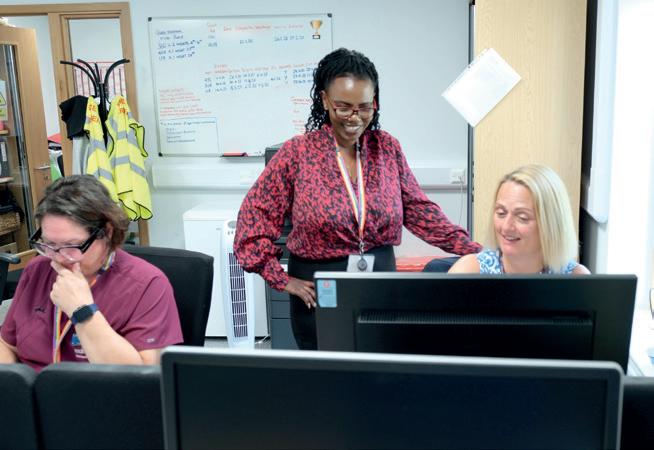
the wider benefits of embedding apprenticeships into workforce strategies: improved morale, stronger service delivery, and greater staff retention.
Elmfield Care tells a similarly inspiring story. Founded during the height of the COVID-19 pandemic, Elmfield made a bold decision to put professional development at the heart of its culture. In just three years, 53 of its team members have embarked on apprenticeships with Paragon Skills, supported by levy sponsors such as Premier League Bournemouth Football Club and Wiltshire Council. The results?
Another 100% pass rate, with 75% of learners achieving a merit or distinction. As Elmfield explained, “We are not just a care provider; we are a catalyst for professional growth and development.”
How does Paragon Skills tailor its apprenticeship and training programmesspecifically for care homes?
Apprenticeships with Paragon Skills are designed with the realities of care homes in mind. Training reflects day-to-day workplace scenarios - from safeguarding and wellbeing to communication with families and teamwork. Programmes are job-ready, practical, and aligned to each employer’s culture and compliance
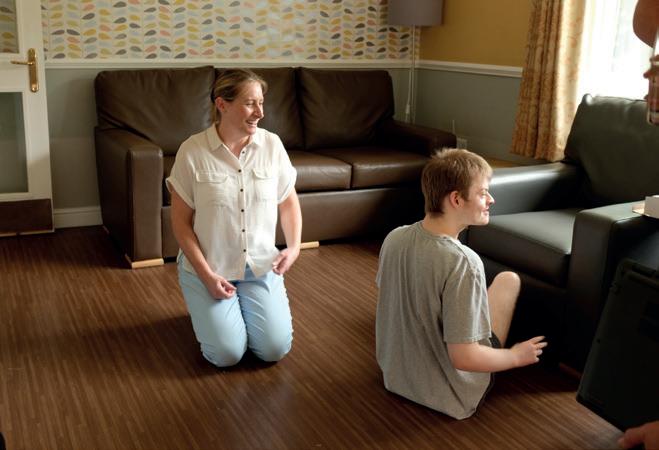
requirements. This ensures staff are gaining the skills most valued on the floor, directly improving the quality of care. Working in partnership with care homes has also shaped the way we deliver training. Care is a 24/7 service, so we’ve created a flexible, blended learning model that fits around shift patterns and minimises disruption. Managers have full visibility of progress, compliance milestones, and outcomes, making apprenticeships a practical, impactful investment.
What measurable outcomes have care homes seen from using Paragon Skills’ training services?
Apprenticeships improve retention, particularly among newer and younger employees. They enhance safeguarding awareness, communication skills, and overall confidence, while also supporting CQC compliance through evidence of structured workforce development. The result is a team that is more skilled, motivated, and engaged.
Yes, challenges exist, time pressures and staffing shortages among them - but with clear scheduling, continuous support, and guidance on funding, we make apprenticeships accessible and achievable for employers.


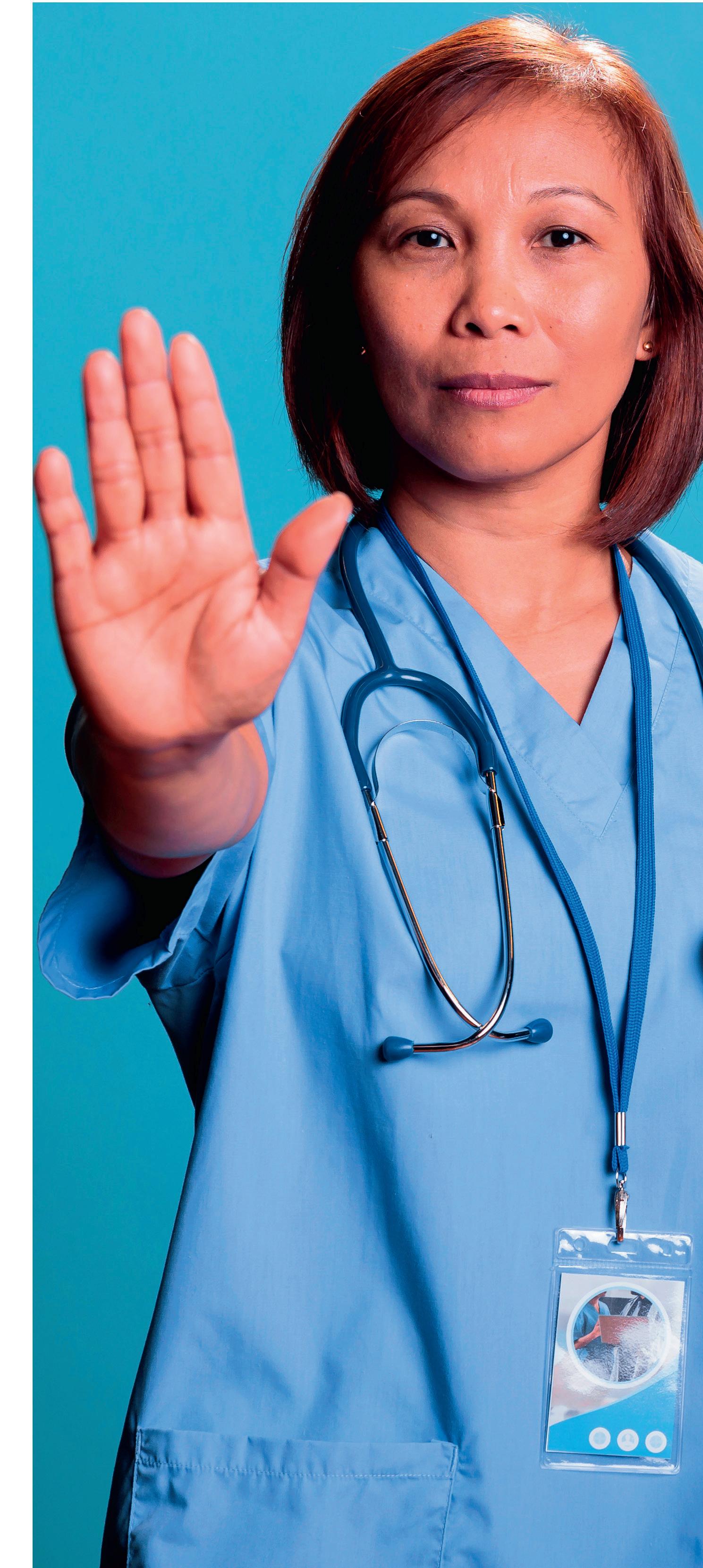
Recruitment & Retention
Two Sides of the Same Coin.

Staffing is the beating heart of every care service, yet many providers face a constant cycle of vacancies, turnover and agency reliance. These pressures do not just strain continuity of care; they create additional stress and pressure for managers. At The Talent & Retention Co, we know recruitment and retention are deeply connected, and the challenges go far beyond what appears on the surface.
We like to think of recruitment and retention challenges like an iceberg. At the surface you see unfilled shifts, high spend and burnout, but the real weight lies hidden beneath: culture, communication, leadership and support. Unless these deeper issues are addressed, any fix will only be temporary. And like any iceberg, it is hard to navigate when you cannot see what lies below the surface.
That is why we begin with our Thematic Data Retention Audit.
This is a structured process for examining qualitative data from sources such as absence patterns, agency use, staff turnover, and employee feedback. Using diagnostic tools such as the 5 Whys, we analyse these inputs thematically to uncover the cultural and operational patterns driving instability. The outcome is not just more information, but clarity. A roadmap grounded in evidence that enables confident decisions about workforce strategy.
From there, we partner with providers to turn audit insight into action. Our 90-Day Workforce Stabilisation Plan is designed to deliver measurable improvements within three months by combining audit findings with a co-designed action plan. Providers own the delivery, while we guide the process, with 30, 60 and 90-day checkpoints and a final impact report to track progress and outcomes.
For those who want to sustain
long-term stability, our Ongoing Retention Partnership provides continuous advisory support, quarterly reviews and governanceled workforce insight. It also brings external perspective and reassurance, helping prevent regression and ensuring positive changes become part of everyday culture.
The impact of this approach is measurable: reductions in absence, lower attrition, decreased reliance on agency staff, and reduced cost per hire, alongside the financial savings and reputational benefits that follow. Staff satisfaction grows, regulatory outcomes with CQC and Ofsted strengthen, and most importantly, care outcomes improve through continuity, safety and trust.
At The Talent & Retention Co, our mission is simple: to partner with care providers to build teams that last, cultures that thrive, and workplaces where people want to become our future leaders.
talentandretention.co.uk



An Effective Service
Maintaining a clean, safe, and welcoming environment is essential in the care home sector, not only for regulatory compliance but, more importantly, for the wellbeing and comfort of residents. In this piece, we explore how Robust Cleaning Solutions (RCS) sets itself apart by combining specialist deep-cleaning expertise with genuine first-hand care home experience.
What Robustdistinguishes SolutionsCleaning
in the care home sector?
Robust Cleaning Solutions stands out by combining specialist deepcleaning expertise with first-hand care home experience. Our founder spent over a decade managing hospitality and cleaning within care homes, from single-site operations to overseeing more than 22 homes. This insight ensures our services are practical, not theoretical, and tailored to the realities of care environments. We use professional-grade, sustainable methods that deliver high-quality results with minimal disruption. Carpets typically dry within 5–15 minutes, maintaining safe, welcoming spaces for residents and staff. Our cleaning restores carpets, hard floors, and upholstery while removing harmful pathogens that degrade materials, extending their lifespan and reducing replacement costs. Above all, we treat care homes as residents’ homes, working collaboratively with in-house teams to support daily life rather than interrupt it.
Compliance with Regulatory Standards
We maintain strict adherence to CQC and Health & Safety standards through comprehensive training, up-to-date policies, and approved cleaning systems. All operatives are trained in infection prevention, COSHH, and safe equipment use, with regular refreshers and toolbox talks. We use eco-conscious,
industry-approved products with colour-coded systems to prevent cross-contamination and conduct audits on every job. Supervisors monitor quality, and client feedback informs continual improvement. Our methods are reviewed with clients beforehand to ensure transparency and compliance with best practice.
Tailored and Scalable Services
We adapt to the size, layout, and needs of each care home. Flexible scheduling, scalable teams, and specialist care environment knowledge allow us to handle everything from small homes to multi-site operators. Custom packages cover carpets, hard floors, and upholstery, ensuring clients receive the right level of support. Our founder’s hands-on care home experience shapes our approach, prioritising hygiene, safety, and resident comfort.
Innovation and Sustainability
Sustainability is central to our operations. We use plant-based, biodegradable products, waterefficient cleaning systems, and low-energy equipment. Deep cleaning extends the life of floors and furniture, reducing waste, while all materials are recycled, avoiding landfill. Clients benefit from cleaner, healthier spaces aligned with modern sustainability values.
High-Quality, Efficient Cleaning
RCS uses professional-grade, sustainable methods that minimise
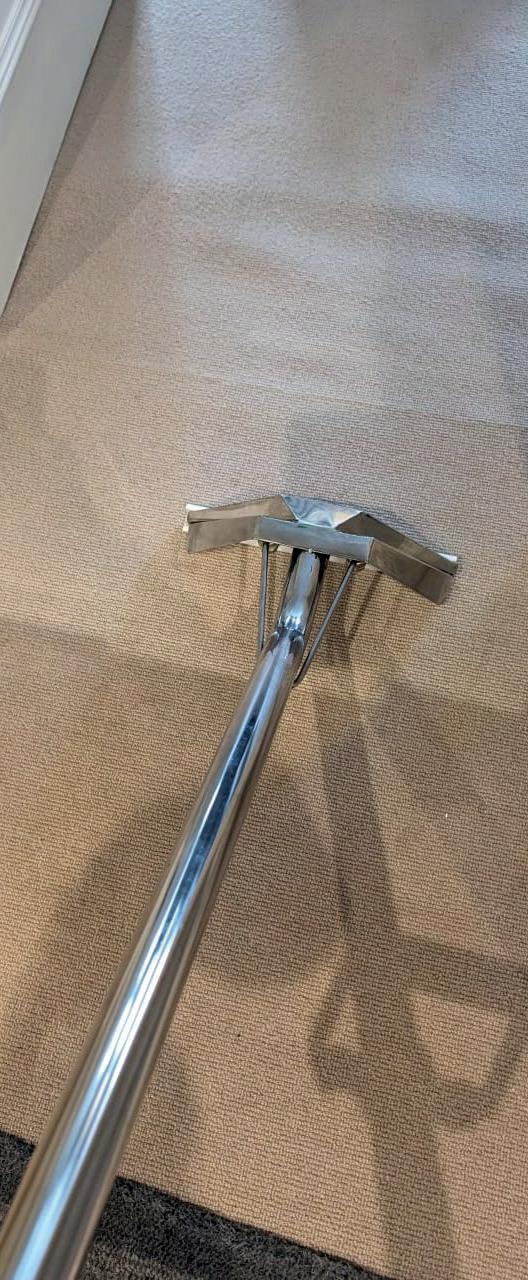
disruption (carpets dry in 5–15 minutes), restore and extend the life of carpets, hard floors, and upholstery, and remove harmful pathogens which are deep into the bottom of the pile, that degrade materials over time. Resident comfort and respect for care home environments are central to every job.

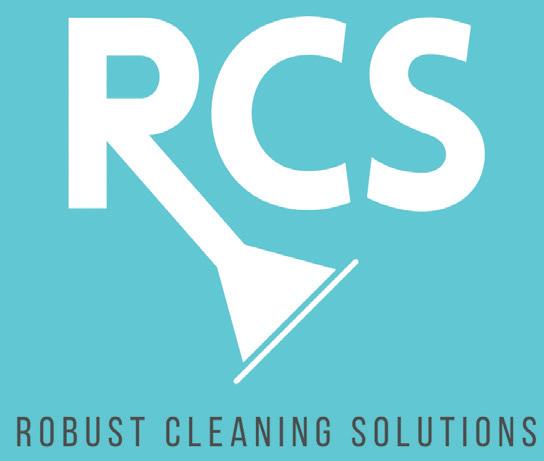







Stronger Together: ABM Angel Healthcare
ABM Trade (UK) Ltd and Angel Healthcare Solutions Ltd are merging to become ABM Angel Healthcare Ltd from November 1st. Managing Director Simon March explains how the merger strengthens their supply, equipment and service offer, creating a one-stop shop that helps care homes improve efficiency, standards and resident satisfaction.
How does the merger between ABM Trade (UK) Ltd and Angel Healthcare Solutions Ltd allow you to offer a broader and more tailored range of solutions to the residential care sector?
Bringing the two companies together really allows us to connect the dots. ABM has always been strong on the supply side, from uniforms and office supplies to furniture delivered quickly and reliably. Angel, meanwhile, has focused on equipment provision, servicing and full care environment fit-outs. By combining these strengths, ABM Angel Healthcare Ltd can now provide operators with a fully joined-up solution: everyday essentials, one-off projects and ongoing support, all under one roof. For care homes, that means fewer suppliers to manage, simpler ordering and a more coordinated service.

What
advantagesoperational will ABM Angel Healthcare Ltd deliver following the integration?
One of the key benefits is scale. Together we can hold more stock, improve logistics and achieve faster turnaround times. So whether a home needs a replacement part at short notice or a complete equipment installation, we can respond quicker and with greater availability. The real benefit for operators is reassurance. Equipment downtime is stressful, especially when it impacts residents’ comfort or safety. With our combined resources, we’ll be able to keep things running smoothly and reliably — helping care homes maintain standards and strengthen their appeal to families.
From your perspective, how will the creation of ABM Angel Healthcare Ltd influence wider trends across the care home sector?
Care homes are under increasing pressure to do more with less, and that includes time. Operators want trusted partners who can cover multiple needs under one roof so they can spend less time managing suppliers and more time focusing on residents. By forming ABM Angel Healthcare, we’re meeting that need directly — positioning
ourselves as a genuine one-stopshop. That doesn’t just simplify life for managers, it also helps them deliver consistently highquality care, which in turn supports reputation and occupancy.
How have the companies aligned their teams and culture to ensure continuity of service for existing customers?
We’ve been very conscious of the need for continuity. The good news is that ABM and Angel already share the same values of professionalism, respect and integrity. Since ABM acquired Angel in August 2022, our teams have had plenty of time to work together and build strong relationships. That means we are already operating as one team, with shared principles and a clear focus on supporting our customers. For care homes, the people they know and trust remain in place — now backed by greater resources and support. The aim has been to strengthen relationships, not disrupt them.
www.abm-angelhealthcare.co.uk Live 1st November.
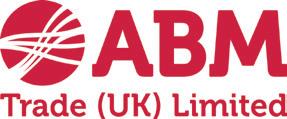



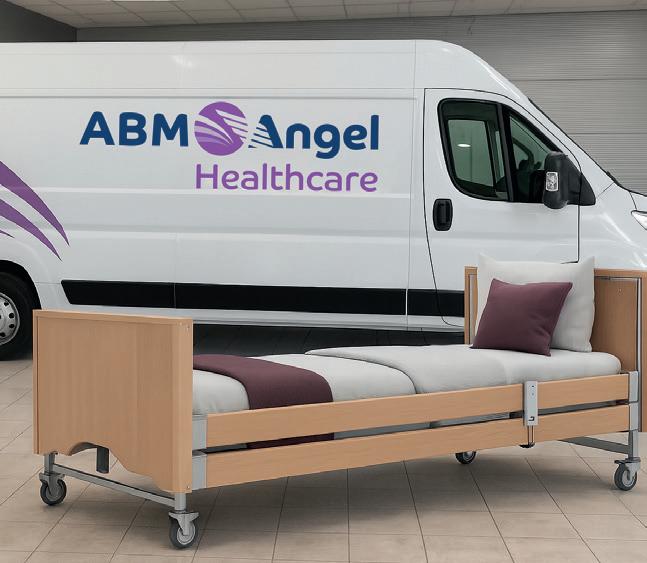





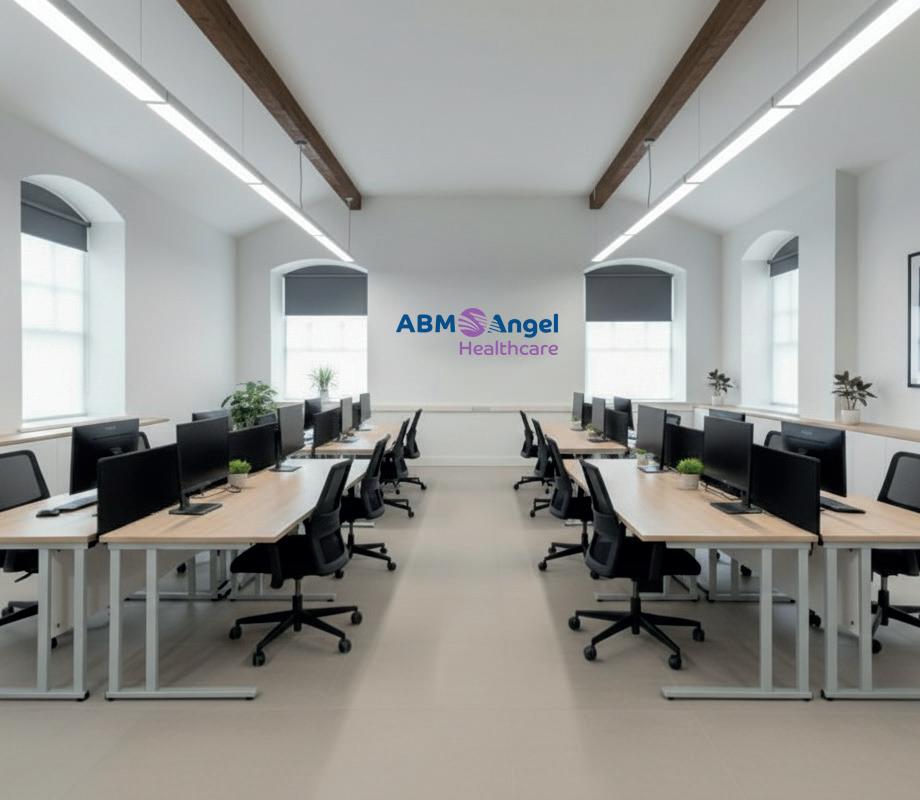

From everyday essentials to advanced equipment — tailored solutions for every care site.
Care Solutions From dementia-friendly products to PPE, cleaning supplies, medical equipment, continence products, and housekeeping essentials - we provide everything you need to ensure quality care and a safe environment.
Equipment Solutions We supply profiling beds and mattresses, hoists, slings, and baths to meet a wide range of care requirements. Contact us to discuss tailored equipment options for your needs.
Furniture Solutions We supply and install a wide range of healthcare-grade furniture in various areas including bedrooms, lounge areas, dining areas, and offices. Please call us to discuss your furniture requirements.
Office Solutions Our comprehensive range includes inks and toners, paper products, filing accessories, and everyday stationery. Everything you need to keep your office running smoothly.
Workwear Solutions We provide uniforms, including tunics, scrubs, and chef wear. If you have specific needs in these areas, please contact us to explore our range and discuss your requirements.
Catering Solutions From tableware and kitchen appliances to cookware and refrigeration, we offer catering solutions for both residential and commercial settings.
Servicing Solutions Our expert team provides LOLER & PUWER compliance checks, call-outs and repairs, technical support, and access to a dedicated service portal.
A Balancing Act
How can care homes use security measures to safeguard vulnerable residents without compromising their dignity, independence, and right to privacy? Jayne Connery, Founder and Director of Care Campaign for the Vulnerable (CCFTV) shares her views.

At Care Campaign for the Vulnerable (CCFTV), we see security measures not as surveillance, but as safeguarding tools and the key is how they are introduced. Safety monitoring should always be choice-led, meaning families, residents (where possible), and staff are consulted from the very start. It’s about transparencymaking sure people know why the technology is there, how it will be used, and what protections are in place around privacy and dignity. When introduced openly and with consultation, monitoring is not about intrusion but reassurance. Families often feel reassured by security measures, but residents may feel differently.
Families understandably want
Dignity is not negotiable.
peace of mind when they have relatives in care, while residents may worry about losing independence. The most effective approach we’ve found is engagement: talking to families and residents in plain language, involving staff in the discussion, and putting clear policies in writing.
Respecting residents’ dignity means involving them (where they have capacity) in the decision, ensuring monitoring is proportionate, and building in safeguards such as consent, signage, and strict data access controls. It’s also important to stress that the purpose is protection, not
constant observation.
From my experience, when introducing surveillance in a care home to ensure it supports care rather than becoming intrusive, full consultation with residents, families, and staff before implementation is essential. You must then highlight the clear, robust policies covering privacy, dignity, and data security. Regular reviews are 100% necessary to ensure monitoring remains proportionate to residents’ needs. Training for staff is also key, to ensure that monitoring is understood as supportive, not punitive. Finally, transparency at every level goes without saying – so

We should not fear technology - we should fear opacity and inconsistency.

that families and residents know exactly how and why monitoring is in place.
I believe the future of safeguarding lies in collaboration. Technology will continue to evolve, but it must always be guided by ethical frameworks that prioritise dignity. We should not fear technology - we should fear opacity and inconsistency. Providers who adopt safety monitoring with compassion, consultation, and transparency are not only protecting residents but also building trust with families and staff.
For us at CCFTV, dignity is not negotiable. Safeguarding done well is not about compromise but about ensuring safety and dignity walk hand in hand. The forward thinking providers who embrace this approach will lead the way in creating safer, transparent, and more compassionate care.
Enhancing Safety
We explore how enhanced safety measures, such as Pinpoint’s advanced staff and patient alarm systems, are helping care homes safeguard both residents and carers while improving overall quality of care.
Care homes play an essential role in looking after some of the most vulnerable members of society. With professional carers to hand and tailored facilities, care homes offer residents a supportive environment where they can maintain a degree of independence while receiving the medical care and professional assistance needed to live a healthy, fulfilling life.
Yet care home environments are not without risk. Data from the BMJ suggests care home residents are three times more likely to experience a fall, compared to those living in their own home. Equally, new research from the HSE reveals over 12,000 violent attacks have taken place against residential care staff in the last 10 years.
Such figures draw attention to the risks associated with care home facilities and the need for measures to enhance the safety of all those on site.
Addressing risks to staff
According to the Care Workers Charity, 85% of care home workers will experience violence from patients while on duty. While such aggressive behaviour is often unintentional, and instead the result of the individual’s health condition, medications and psychological state, it can have serious effects, including injury, low employee morale and high rates of staff turnover.
Given the often-unpredictable nature of this behaviour, advanced staff safety systems are a vital asset to protect both care staff and residents.
Pinpoint’s safety alarm systems enable employees to swiftly

summon assistance when faced with challenging patient behaviour. With the simple press of a button on their person-worn alarm, care workers alert colleagues to the exact location and severity of an incident, eliciting an immediate response to intervene and offer support.
The speed and precision of these systems ensure high-risk incidents are swiftly de-escalated and harm averted. Taking mere milliseconds from alarm activation to information display, and with precise location technology, Pinpoint’s staff alarm system enables the response team to quickly de-escalate and disrupt hostile behaviour.
Optimising Patient Safety
The Pinpoint System is also utilised in non-violent incidents, such as a resident choking, falls or indeed, when an extra pair of hands is needed to carry out a task. Should a member of staff come across a patient in need of assistance during
a routine check, they can use the System to quickly alert colleagues and receive the appropriate support.
These safety alarms are not only used by staff. Patients too can access Patient Call Buttons should they need additional assistance, for example, to get out of bed, in the event of an accident, or to access certain rooms on site. For residents who do not need 1-1 support, the presence of the Pinpoint System offers them the chance to live independently, while still able to access professional assistance quickly and easily.
The Pinpoint P2 System instils care home residents and staff alike with the peace of mind that their safety is the utmost priority and that potential risks are being addressed. As a result, care workers feel more confident and care residents receive greater levels of care, contributing to enhanced treatment outcomes and life satisfaction.
pinpoint.ltd.uk
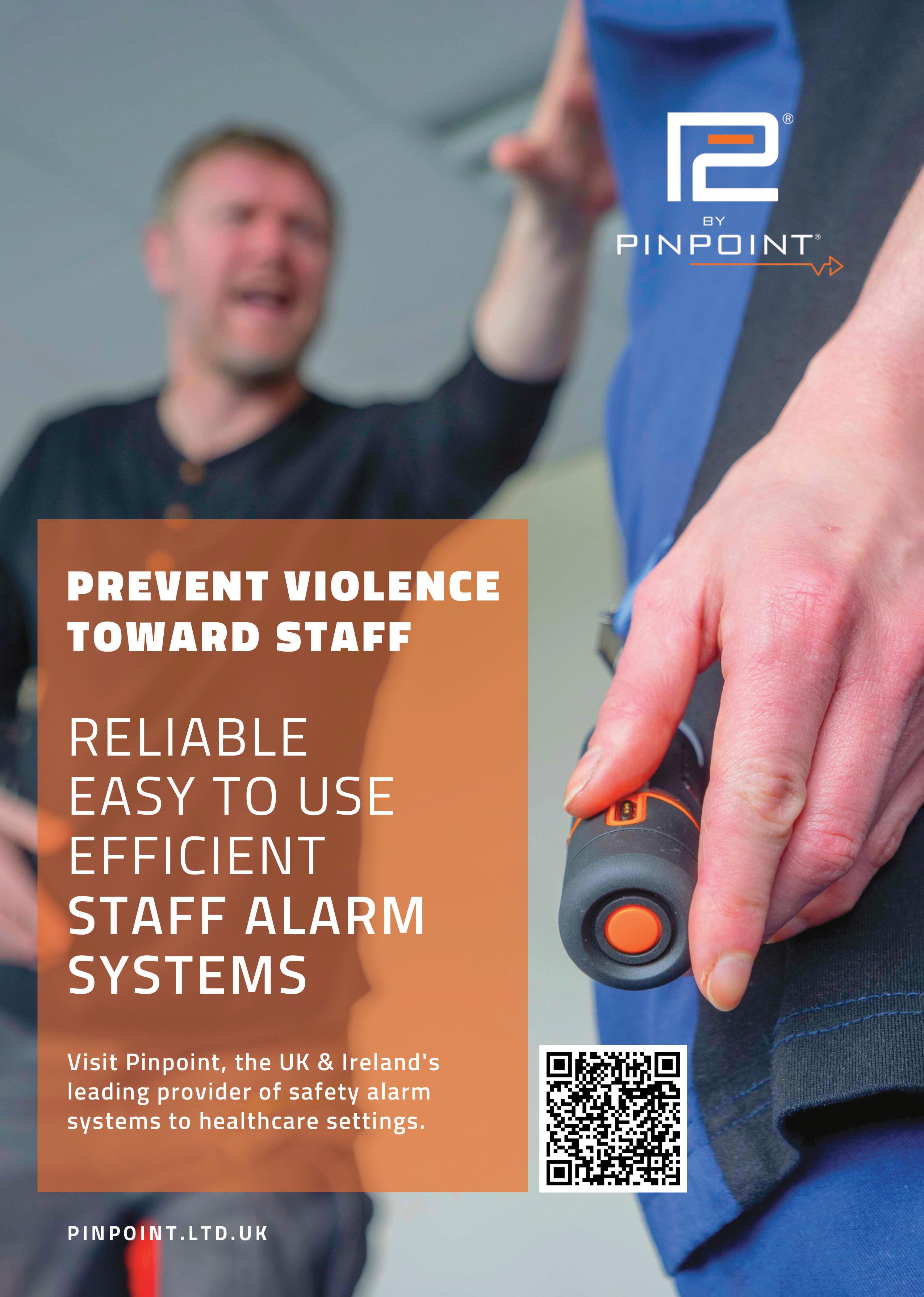
A Clear Message
Care Campaign for the Vulnerable (CCFTV) brought together care leaders, professionals, and partners for a networking event at Loveday Belgravia on 4th September. Against the backdrop of one of London’s most prestigious care settings, discussions centred on the sector’s most pressing challenges, with a clear focus on safety, transparency, and dignity in care – we share the details.
On 4th September, Care Campaign for the Vulnerable (CCFTV) hosted a sector networking event at Loveday Belgravia, drawing together partners, care professionals, and sector leaders united in their commitment to safer and more transparent care.
Loveday Belgravia, is an exclusive private members’ club, known for combining luxury hospitality with truly outstanding care. The setting provided a striking backdrop to discuss wider issues affecting the sector, and CCFTV Founder and Director, Jayne Connery, was clear in her message: “Loveday represents the very highest standards in design, hospitality and dementia care ethos. While it is high-end, what strikes me most is not the luxury surroundingsbut the commitment to people - and that is what should exist everywhere, in every care setting, regardless of postcode or price.”
The event highlighted CCFTV’s ethos of placing vulnerable people at the heart of every conversation.

CCFTV continues to advocate for independent, choice-led safety monitoring and for a culture in dementia care that values staff as well as residents.
Partners supporting the event included ERA Group, Slater and Gordon UK, Care Protect, Adopt a Grandparent, Care England and Vocal Technologies demonstrating the strength of collaboration across legal, technology, and provider networks.
Guests spoke warmly about the opportunity to gather in a setting that celebrates dignity and compassion, and the event
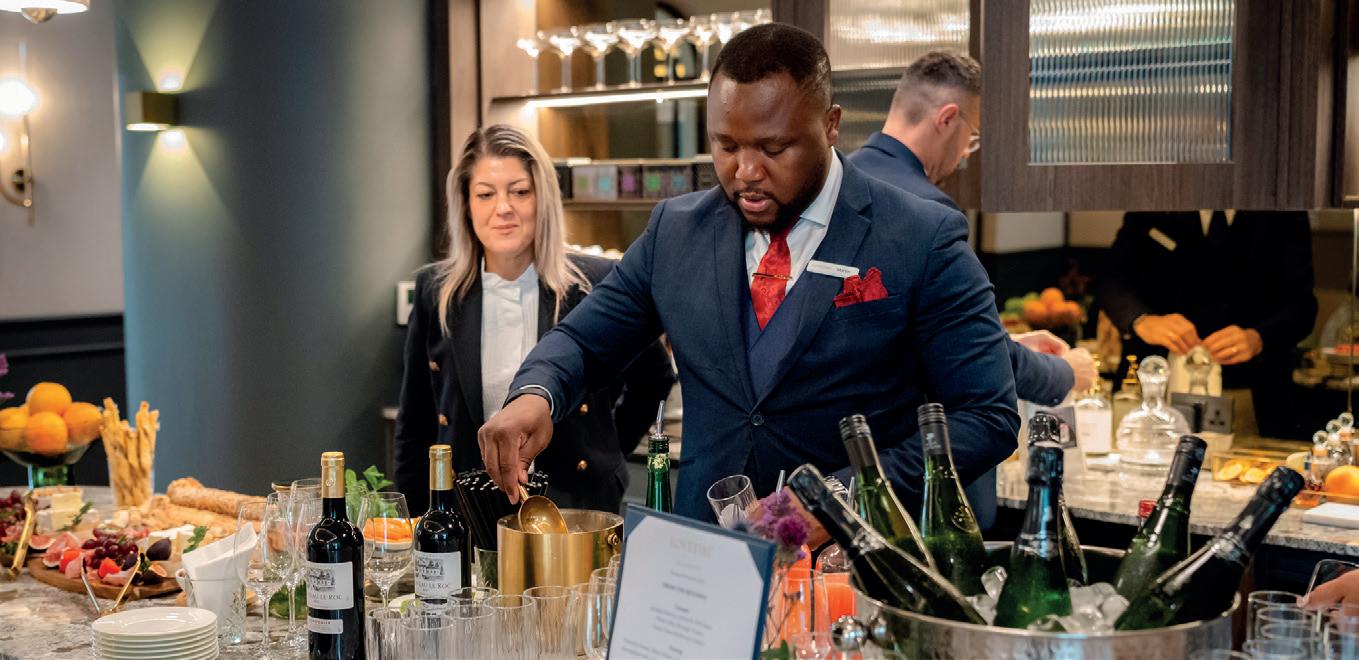
underscored CCFTV’s belief that best practice should never be exclusive - safety, respect, and transparency should be the foundation across the whole care sector.
Jayne Connery, Director and Founder of Care Campaign for the Vulnerable, said: “It was a real privilege to host our networking event at Loveday Belgravia. The setting is undoubtedly high-end, but what stood out most for me was not the luxury but the ethos - the commitment to care, dignity and respect that runs through the entire team. That is what families tell us they want to see everywhere, in every care home, regardless of postcode or price point. I extend my sincere thanks to Loveday’s General Manager, Mark Chakavarti, and his remarkable team for their warmth and generosity in welcoming our guests. Their approach is a reminder of what is possible when care is led with compassion, transparency and excellence - values CCFTV continues to champion across the sector.”
INSPECTION
CiUK is the only Registered Inspection Body in the UK and will undertake your inspection professionally and comprehensively to all applicable standards. This is much more than just a ‘mock inspection.
REPORT
The CiUK report is confidential and will provide a complete analysis of all compliant and non-compliant aspects of the care home. All evidence is available to the customer and supported by source data to improve the care home.
ACTION PLAN
The action plan contains detailed information to correct all non-compliances that can be used as they are or added to the home’s action plan.
SUPPORT
The CiUK team will provide advice, information, and documents to support the care home in continuous improvement and resolving non-compliance after the inspection.
Growth Ahead
Following a momentous year with record results, two home openings, and a care home acquisition in Wales, newly promoted CEO Nye Brown is determined to take Hallmark to new heights with an ambitious plan for growth.
Hallmark Luxury Care Homes is seeking to grow through a mix of acquisition and new care home developments.
The Hallmark CEO has committed to adding another 15 locations to its portfolio of residential, nursing and dementia homes by 2030.
Under Brown’s leadership, the group has plans to acquire an additional 10 care homes and is actively in the market, seeking opportunities to lease or purchase existing trading homes. This is a marked change in strategy with Hallmark renowned in the sector for designing and building their own award-winning care homes.
Hallmark Luxury Care
Homes CEO Nye Brown said:
“I’m delighted to announce that we’re planting seeds for future growth.
“We have the resources and infrastructure in place to acquire homes alongside the commissioning of our own. With continuous investment in our team’s development, we retain and nurture talent to consistently deliver the award-winning care we’re famous for. We take pride in exceeding regulatory requirements and for our ability to keep our homes full.
“We would be a trustworthy and reliable partner for any care home group or care homeowner to sell or lease their home to.”
In 2024, Hallmark strengthened its portfolio with the openings of Eastbourne and Bath, and the acquisition of Penylan House in Cardiff. These successes paved the way for further development.

Construction will soon begin on Melrose Grange in Cardiff’s St Mellons district, an 85-bed luxury home offering residential, nursing, and dementia care. This will be followed by 110-bedroom developments in Woodford Green and Bromley, further extending Hallmark’s footprint across the UK.
For new acquisitions, Brown intends to apply Hallmark’s proven formula of strong talent management, resident satisfaction, commercial performance, and an unwavering commitment to exceeding regulatory standards.
This focus on people and performance has earned Hallmark two Princess Royal Awards—the first awarded in the care sector—for its pioneering development and talent management programmes.
The family-run group also achieved exceptional regulatory outcomes in 2024, with 100% of its inspected homes rated Good, Outstanding, or Excellent by the Care Quality Commission and Care
Inspectorate Wales. This success is underpinned by Hallmark’s internal audit and compliance framework, which ensures all homes consistently meet or exceed industry standards.
Hallmark’s investment in people, environments, and resident experience was further recognised with a 9.8/10 resident and relative review score on carehome.co.uk. This accolade contributed to the group being named a Top 20 Care Home Group for the tenth consecutive year, alongside winning Care Home Group (Medium) at the 2024 National Care Awards.
With a clear strategy, a dedicated team, and a strong track record in care, Hallmark Luxury Care Homes aims to continue its growth, further strengthening its standards across the sector.
For further information about Hallmark’s plans for expansion visit: hallmarkcarehomes.co.uk/ new-developments
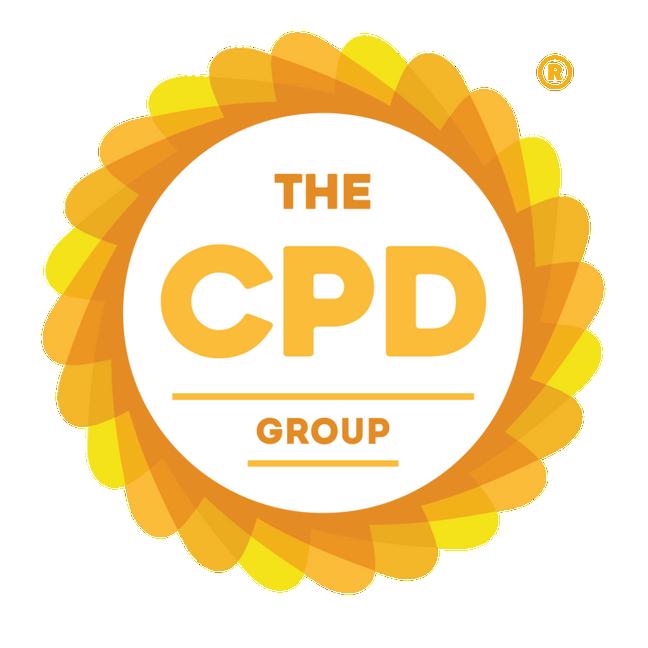





Nutrition in Care Homes
Prioritising health, choice and sustainability.
Nutrition is critically important in care settings.
Around 40% of residents in care homes are at risk of malnutrition, making it essential that any changes to diet menus prioritise both health and individual choice. Fortunately, many sustainable dietary options also align with a healthy diet for older adults.
Tess Warnes, allmanhall’s Registered Dietitian, highlights the importance of integrating sustainability with good nutrition:
“Many sustainable food choices also support key dietetic requirements for older adults – from fibre-rich plant-based proteins to seasonal produce full of natural flavour and nutrients. It’s important to use evidence-based strategies to protect your residents’ health while supporting the planet”.
Sourcing sustainable produce and planning well-balanced menus contribute to a more dignified, enriching dining experience. For example:
• Reduce red meat to no more than 500g per week, consistent with health recommendations. A high intake of red meat is associated with an increased risk of colorectal cancer, including in older adults. Evidence shows that reducing red meat to this level does not impact iron intake significantly.


• Increase beans and pulses, as they are not just excellent sources of protein and fibre, but sustainable. Increasing these foods can add variety, which is important for gut health and the microbiome. A healthy gut microbiome is linked to numerous aspects of health, including mental wellbeing.
• Reduce or avoid processed foods. Processed meats are strongly linked to an increased risk of bowel cancer. Minimising these foods supports long-term health without compromising nutrition.
• Increase fibre intake. Adults over 75 are consuming only 17g of fibre daily, compared to the recommended 30g. Adequate fibre helps reduce constipation, supports gut health, improves mood and energy, and lowers bowel cancer risk.
Replacing 50% of the beef in a cottage pie with lentils or Eat Curious’ plant-based mince, for
example, increases the amount of both fibre and protein in the dish while also reducing the carbon impact by 41% and maintaining the delicious, nostalgic flavour for residents.
Every care setting is different, and dietary needs vary. That’s why expert support matters. With the support of a food procurement partner like allmanhall, you can make ingredient swaps that both protect nutrition and improve food quality.
Sustainability isn’t just an add-on. Alongside nutrition, it’s part of a dignified approach to catering in a care setting, supporting the health and wellbeing of residents through every meal.
allmanhall.co.uk





Care Home Equipment Accounting
Intracare
benjones@intracare.co https://intracare.co Intracare Ltd
Laundry

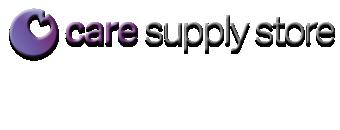
Care Supply Store
01375 651 609
www.caresupplystore.co.uk

@caresupplystore
Care-SupplyStore-708536899310571 care-supply-store
Coffee Solutions

JDE Professional UK
0808 100 1030
www.jacobsdouweegberts professional.co.uk
Facilities Management

Red Peak Compliance
0208 049 2309
comply@redpeakcompliance.com www.redpeakcompliance.com
Food Services

allmanhall
01225 745520
hello@allmanhall.co.uk www.allmanhall.co.uk
allmanhall


Gillman’s
0800 014 1474
commercial@gillmans.co.uk www.gillmans-commercial.co.uk

@gillmans_appliances gillmansappliances gillmans-commercial-laundry
Girbau
01462 427780
sales.uk@girbau.com www.girbau.com Girbau girbau-uk
Miele
0330 160 6693
professional.sales@miele.co.uk www.miele.co.uk/pro/care miele-professional
Procurement

EF-group
07484 521996
chriskirton@ef-group.co.uk ef-group.co.uk/healthcare ef-group-social
Remote Health Monitoring
August International
01920 487700
audarhealth@augustint.com www.audarhealth.com/home/ carehome

@august_lab
AugustInternational august-international
